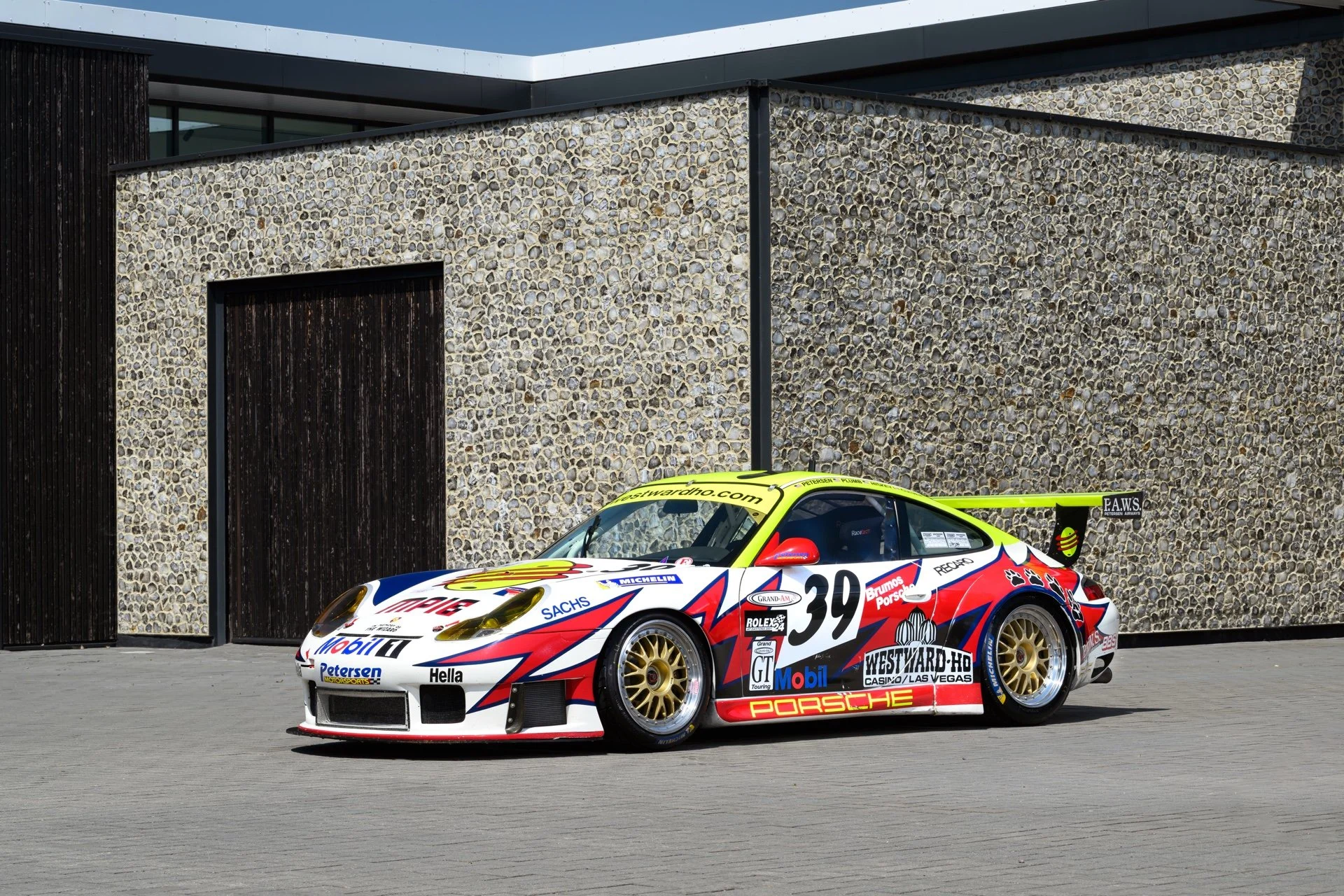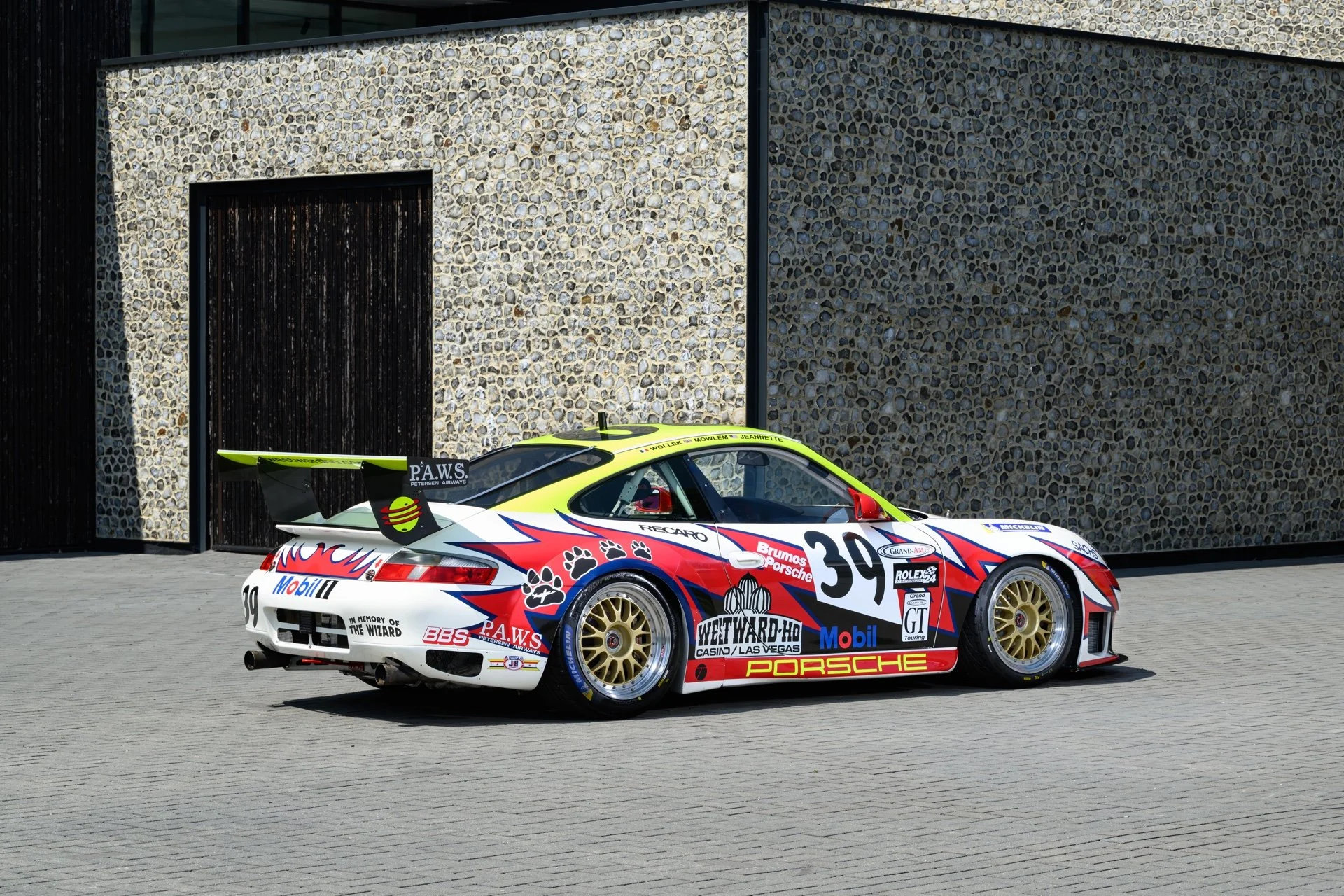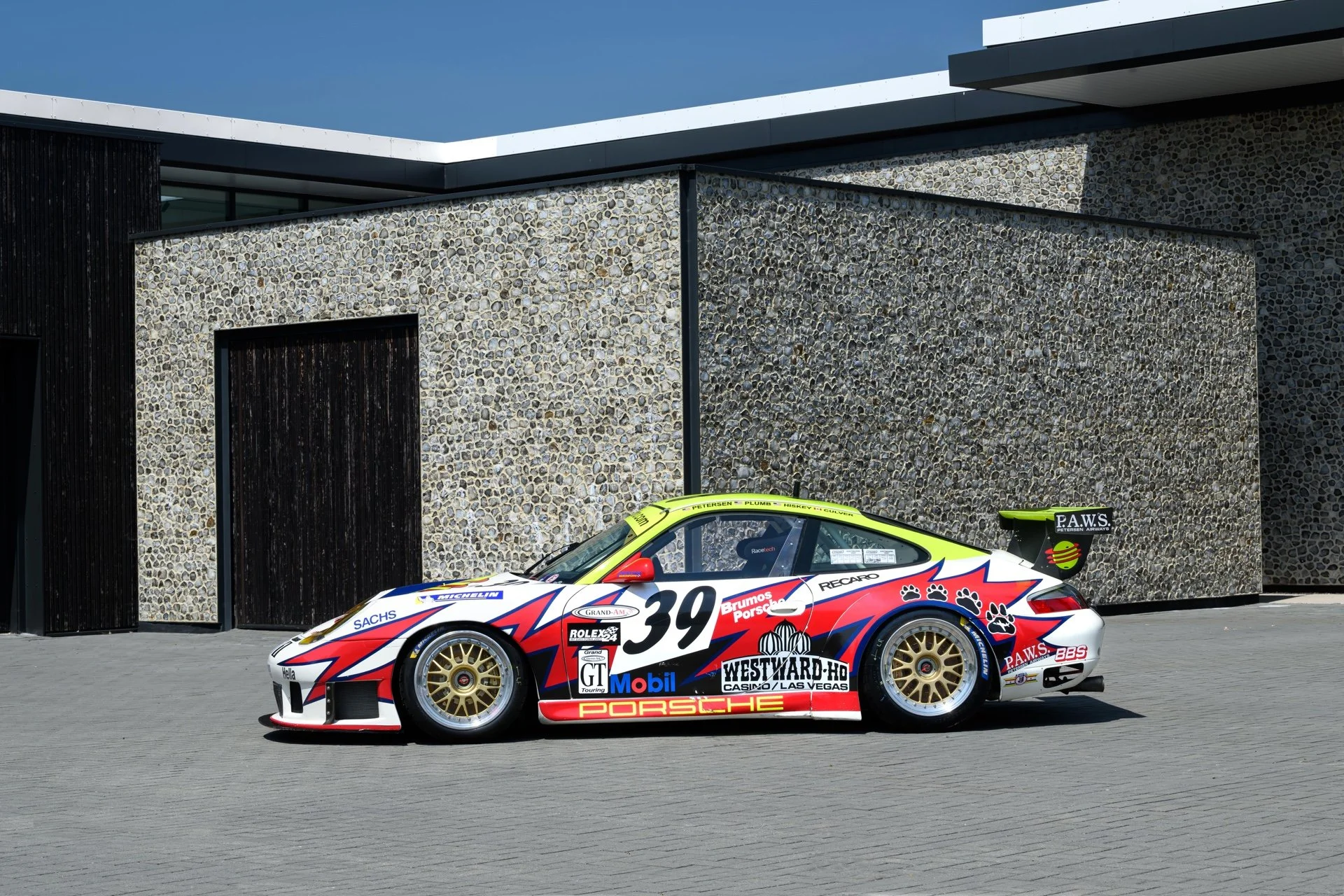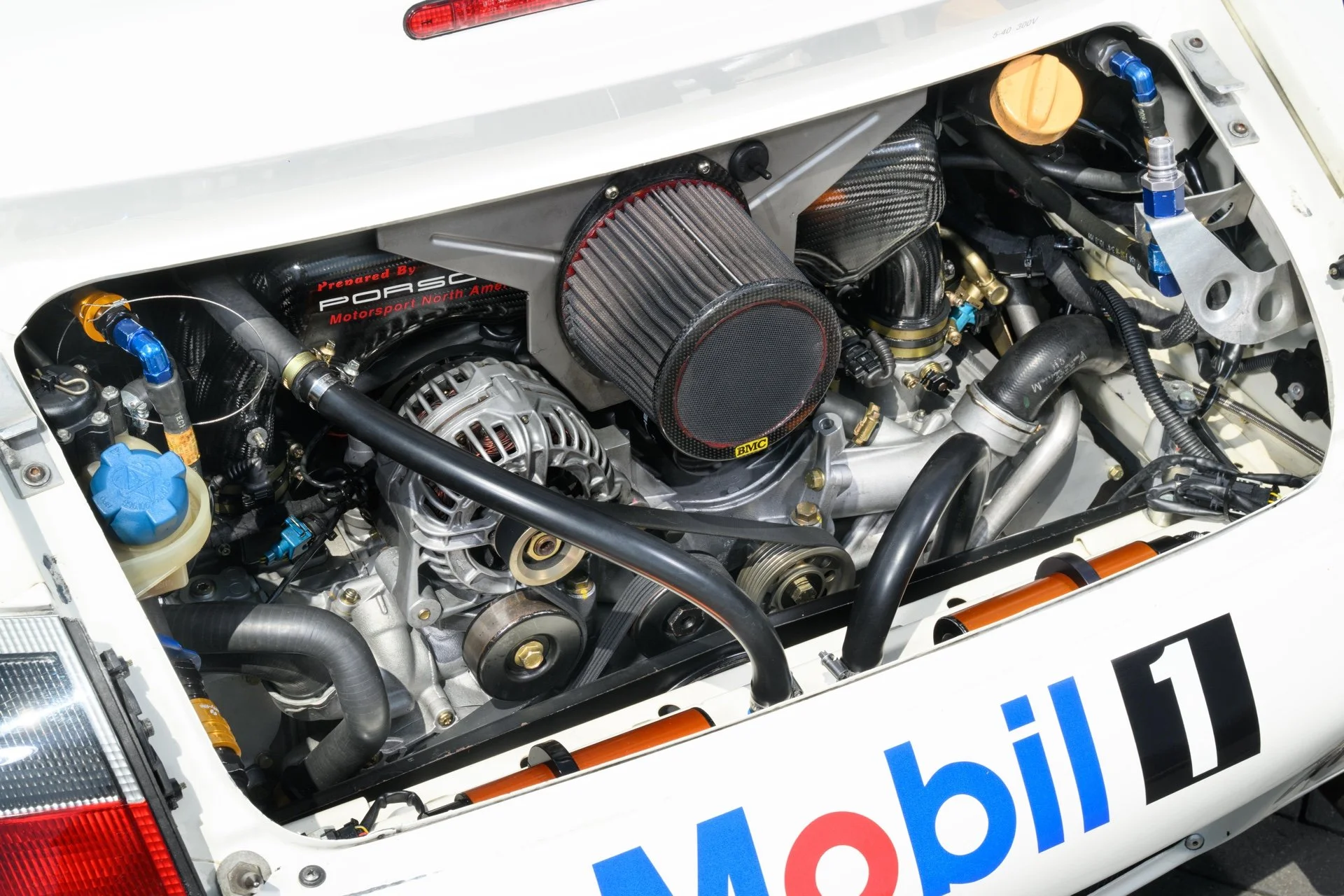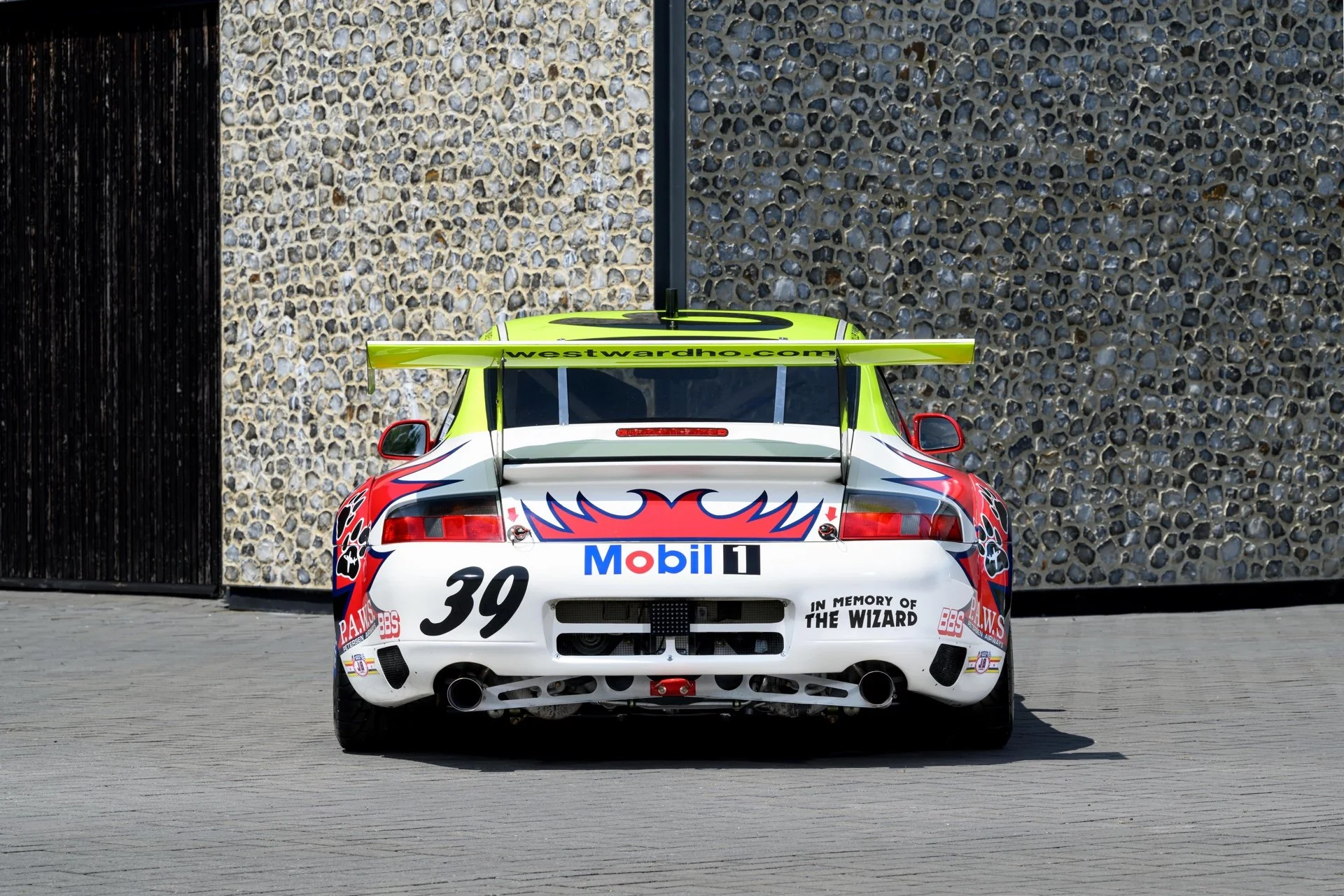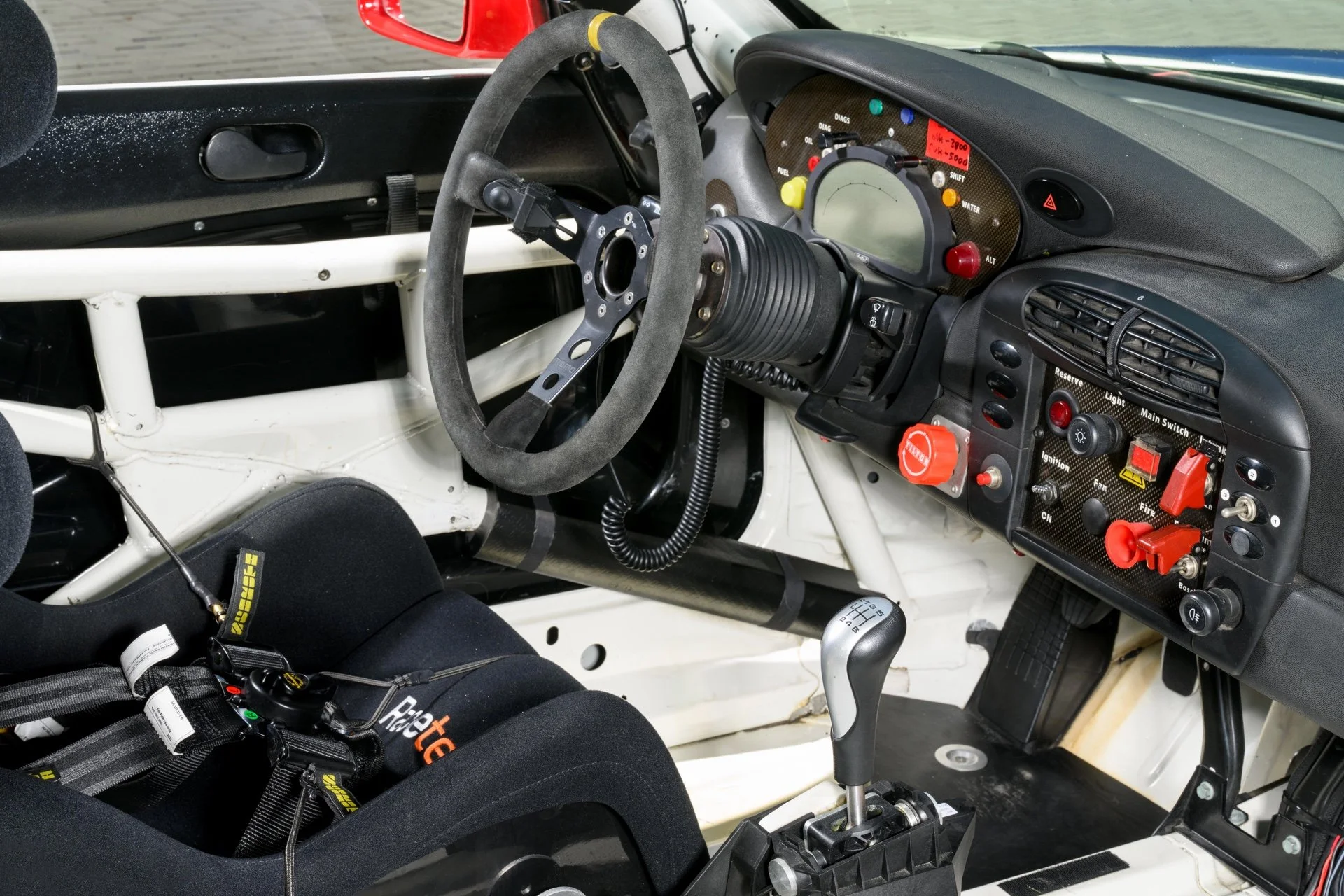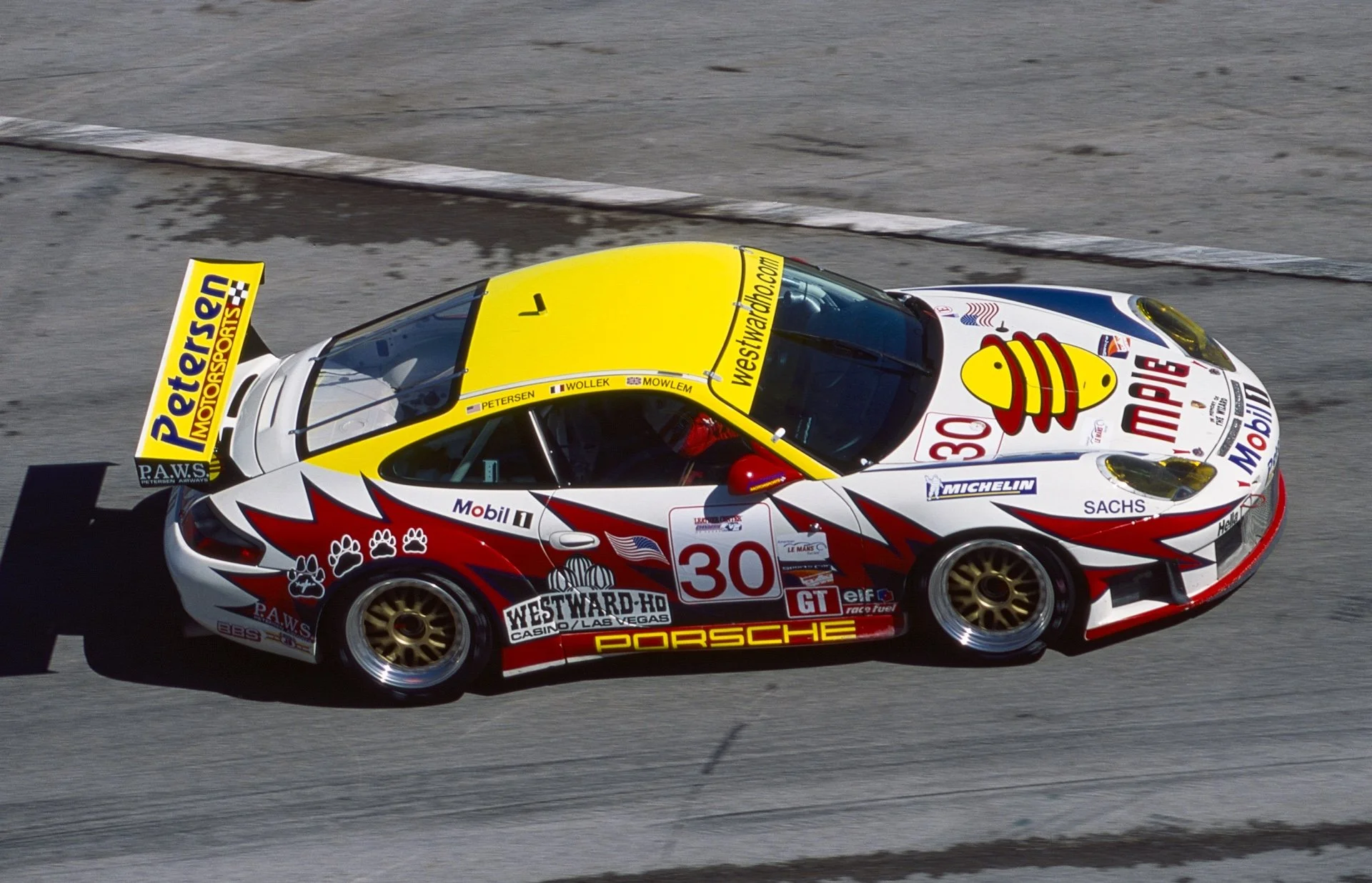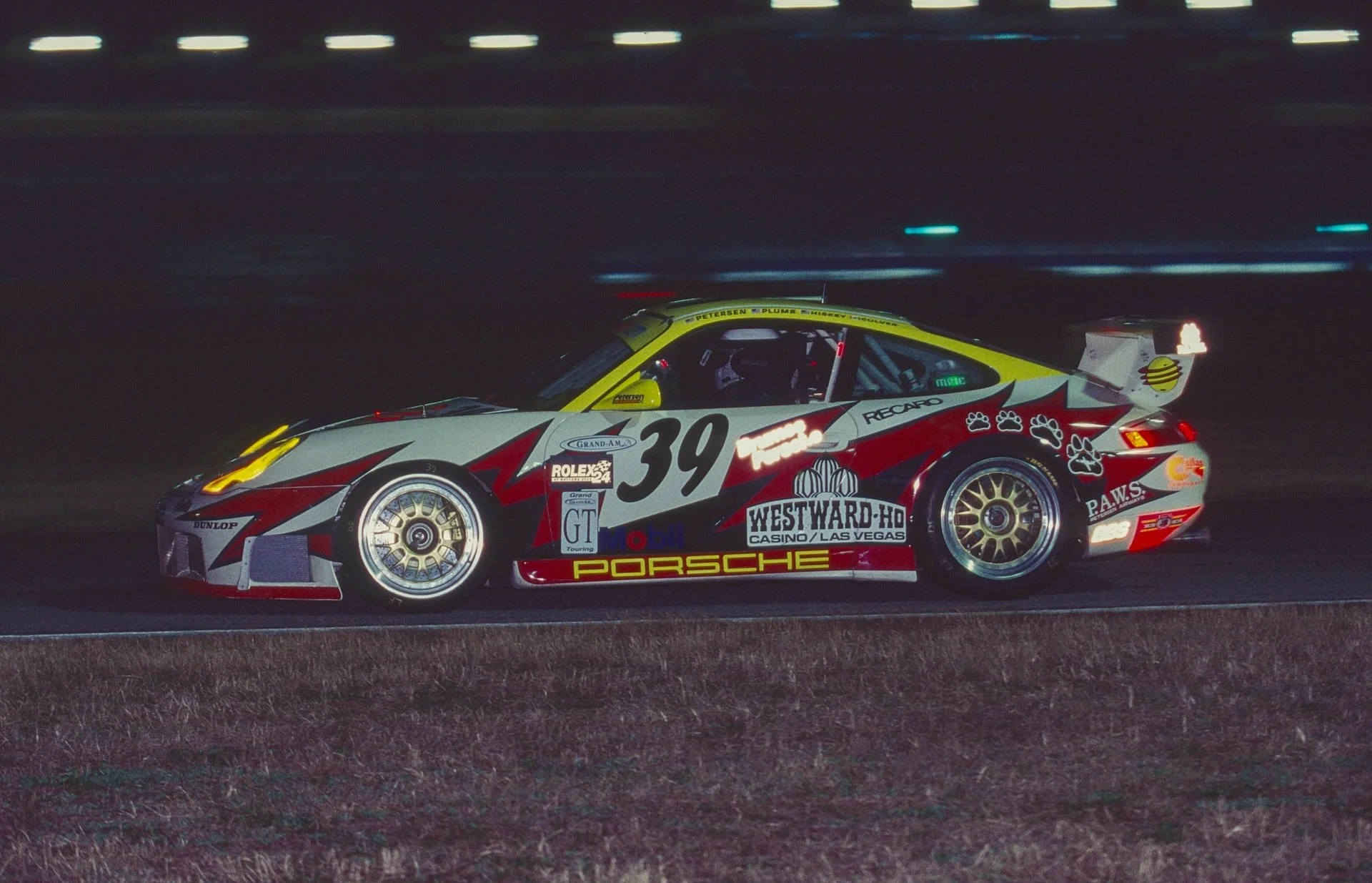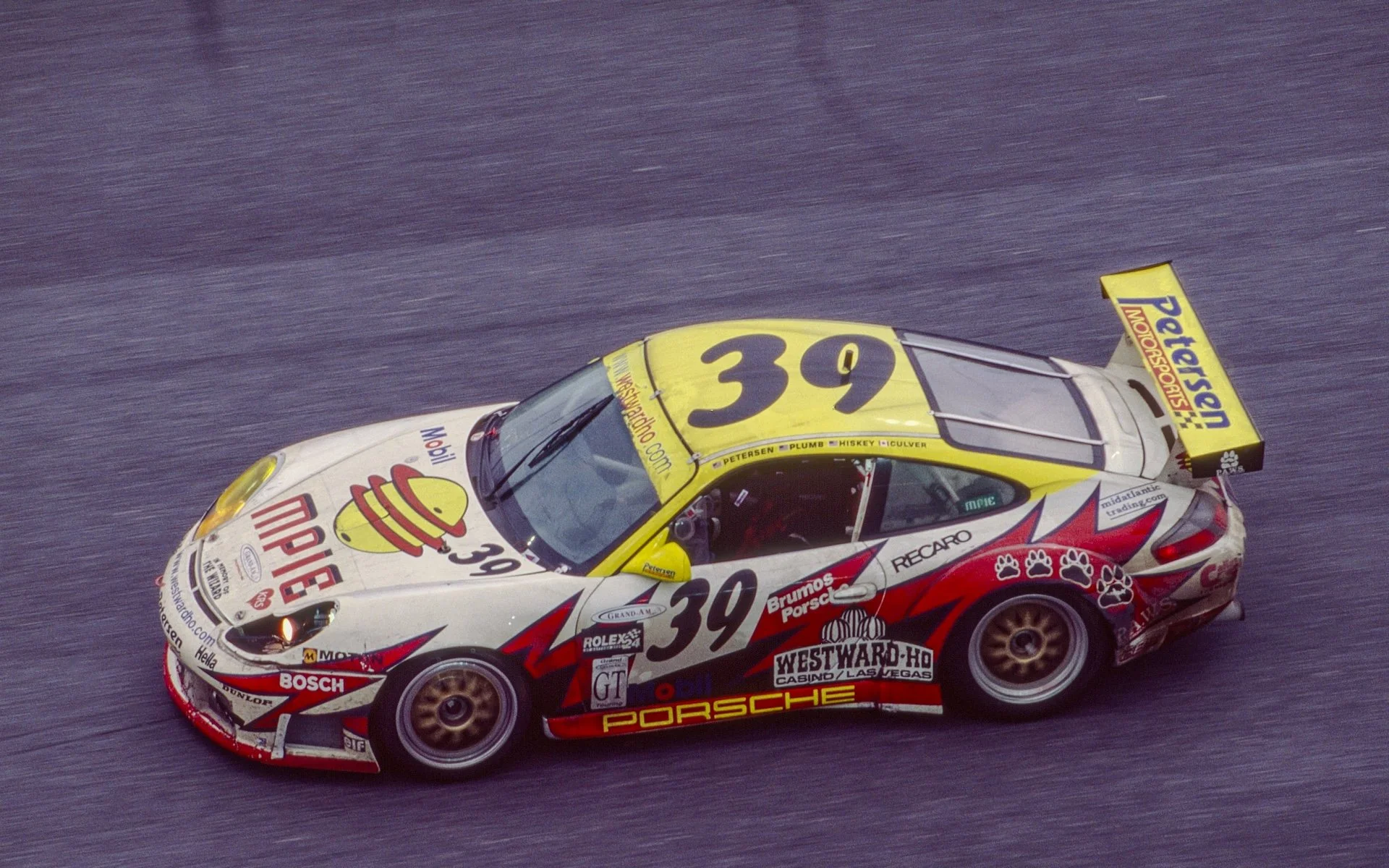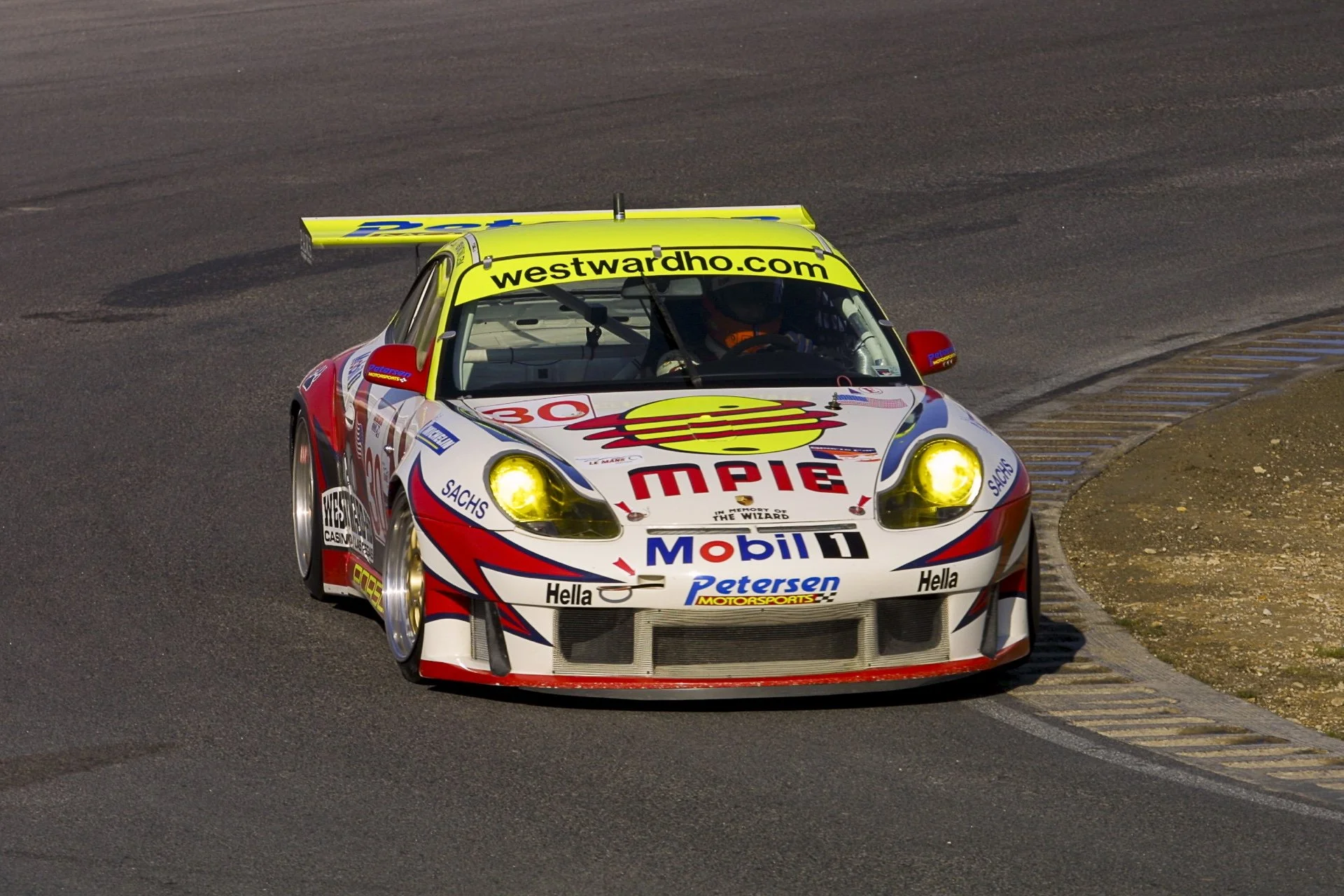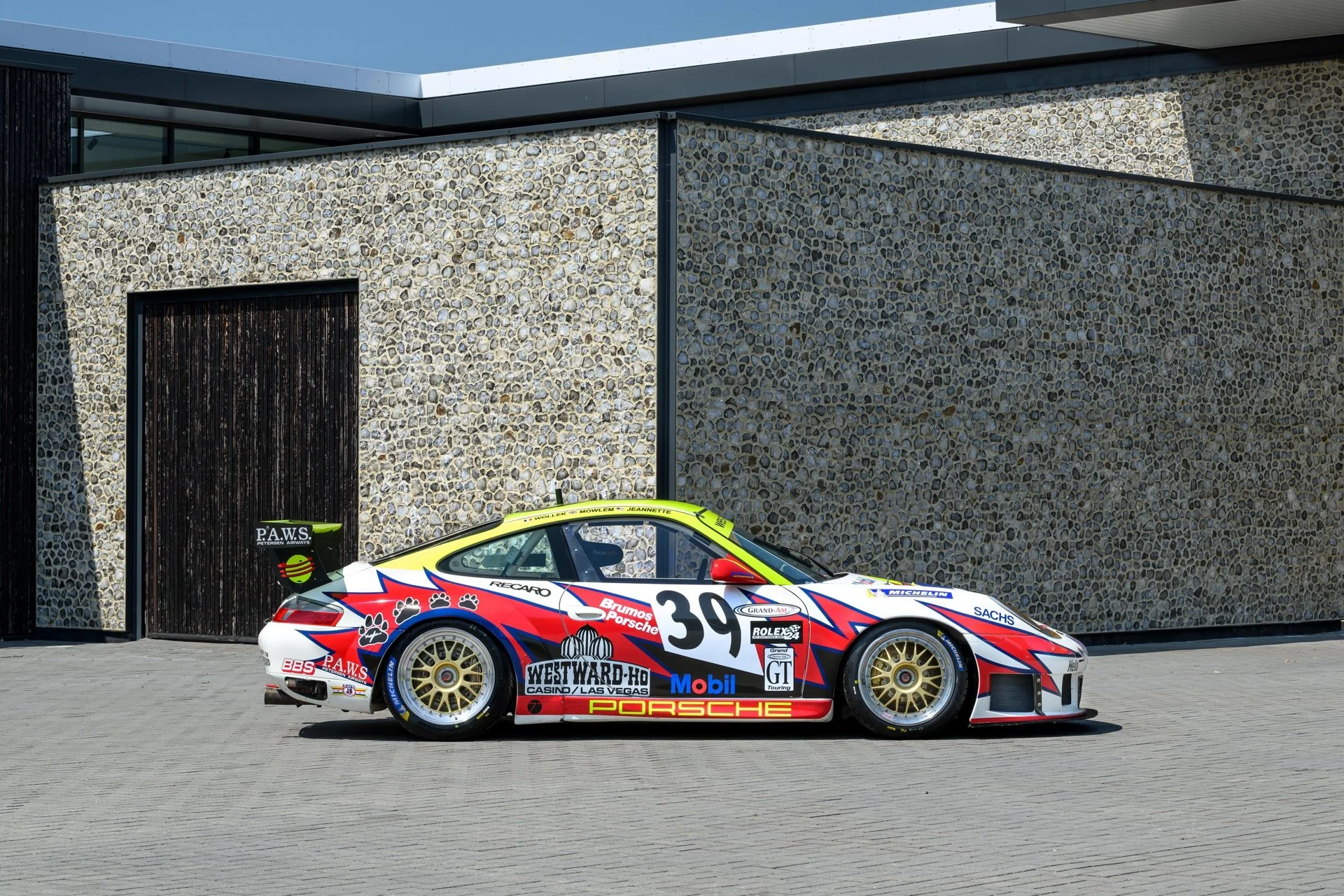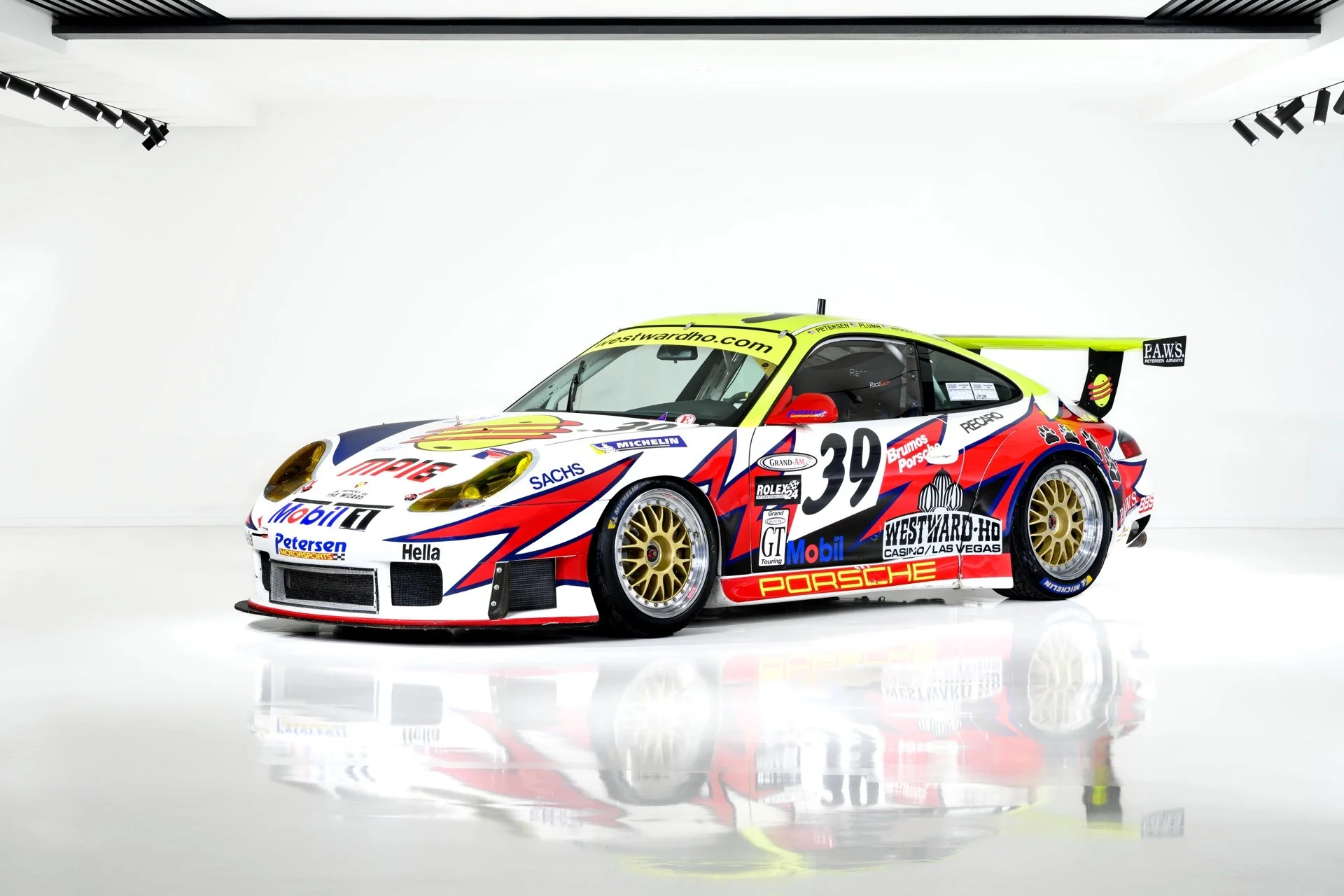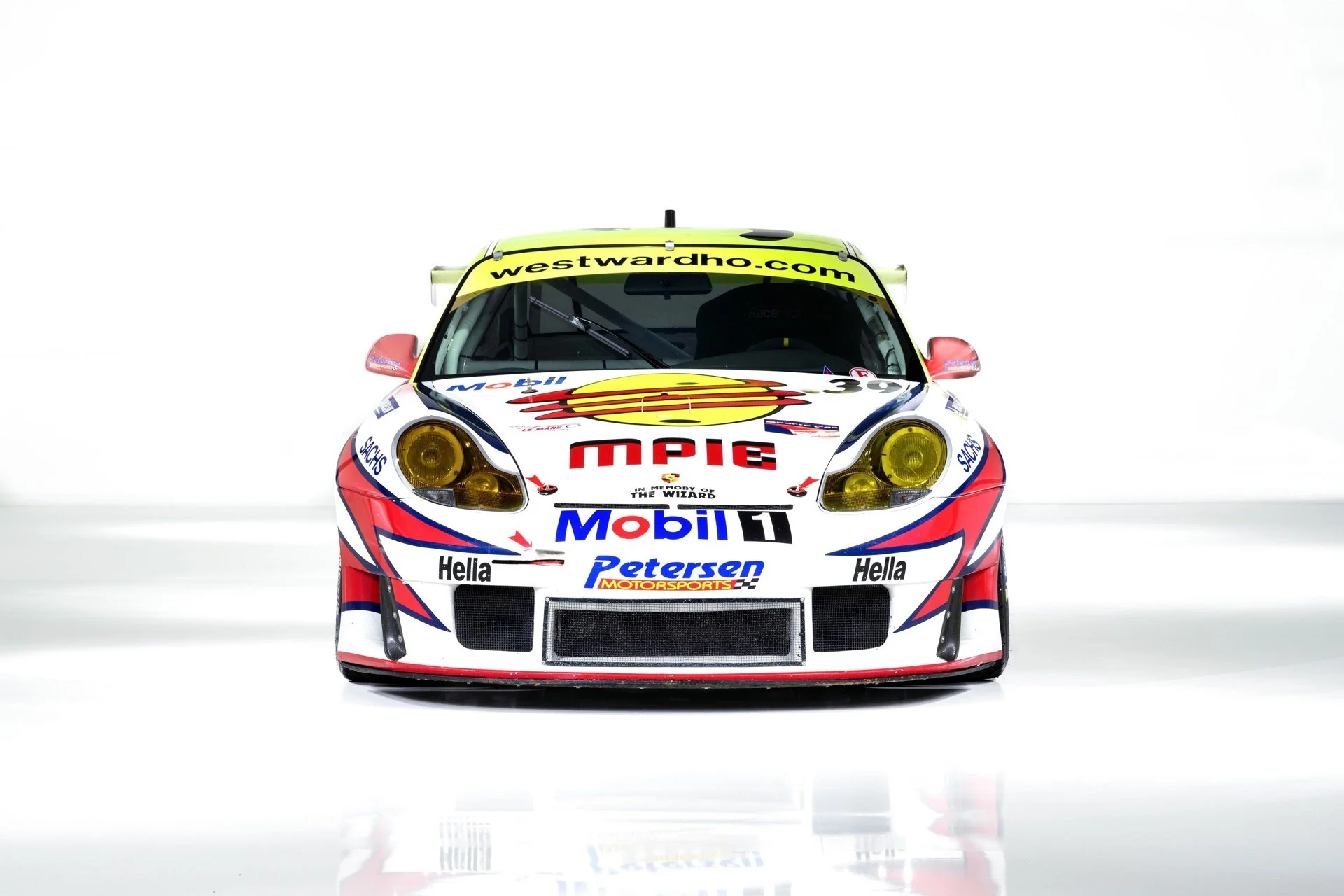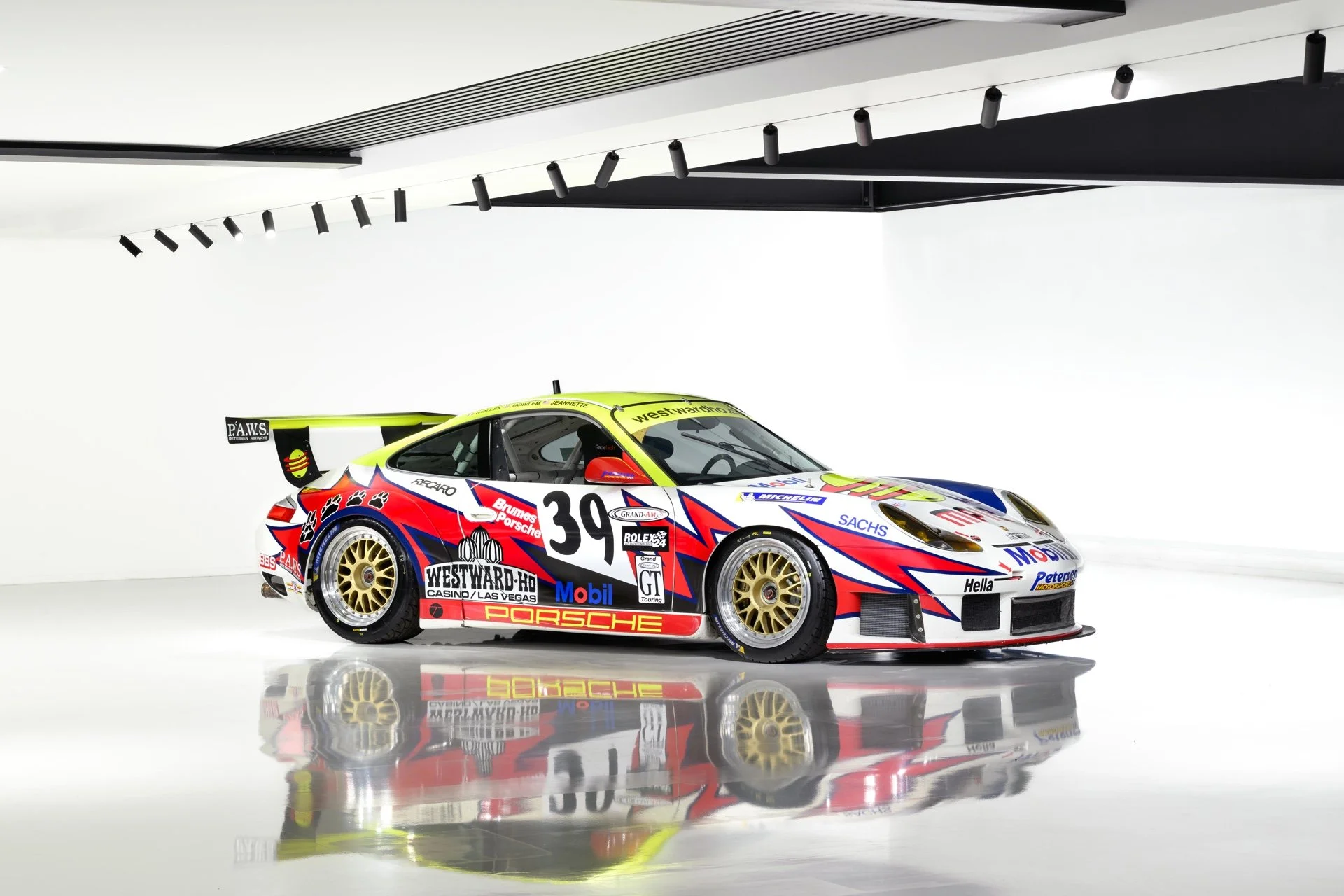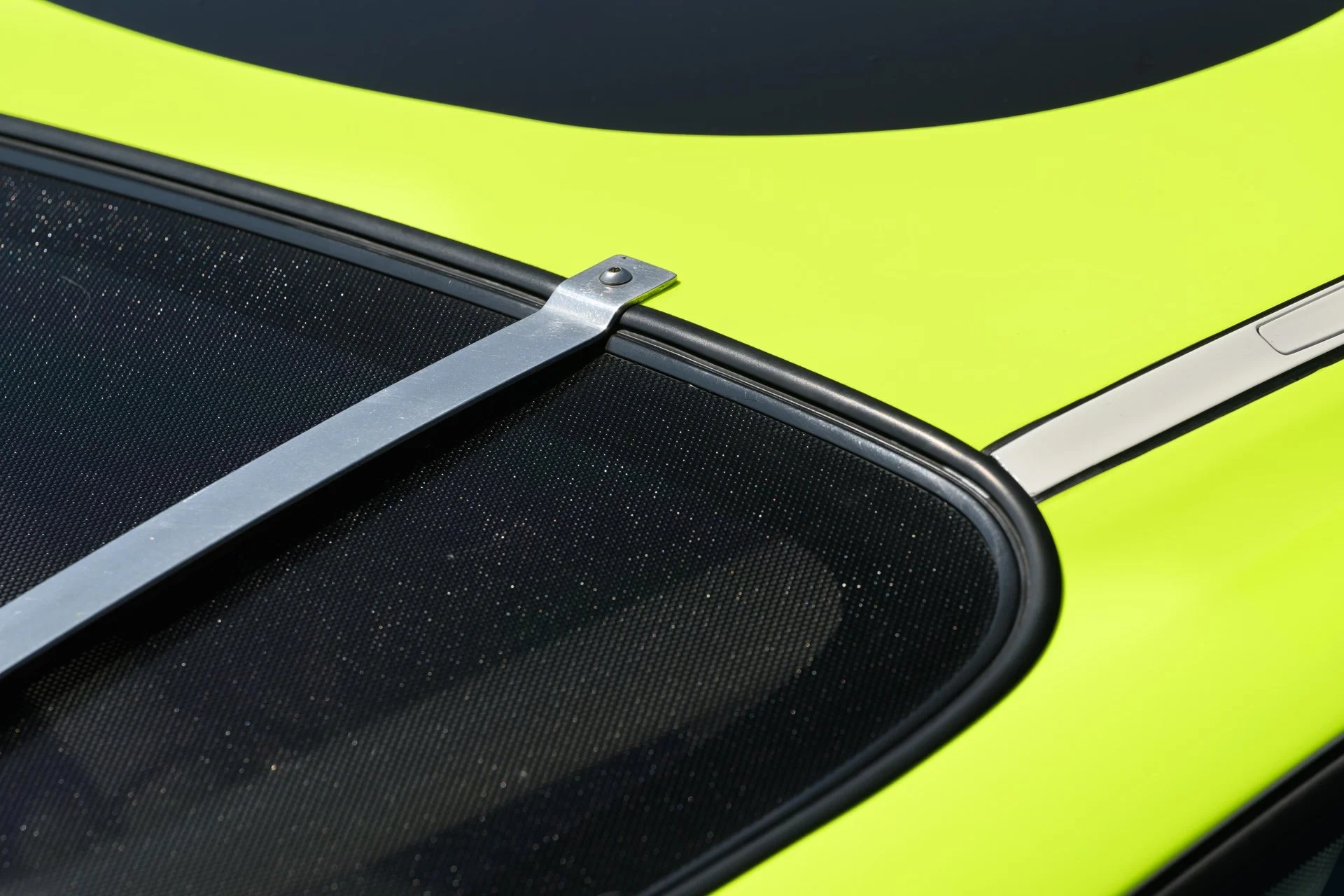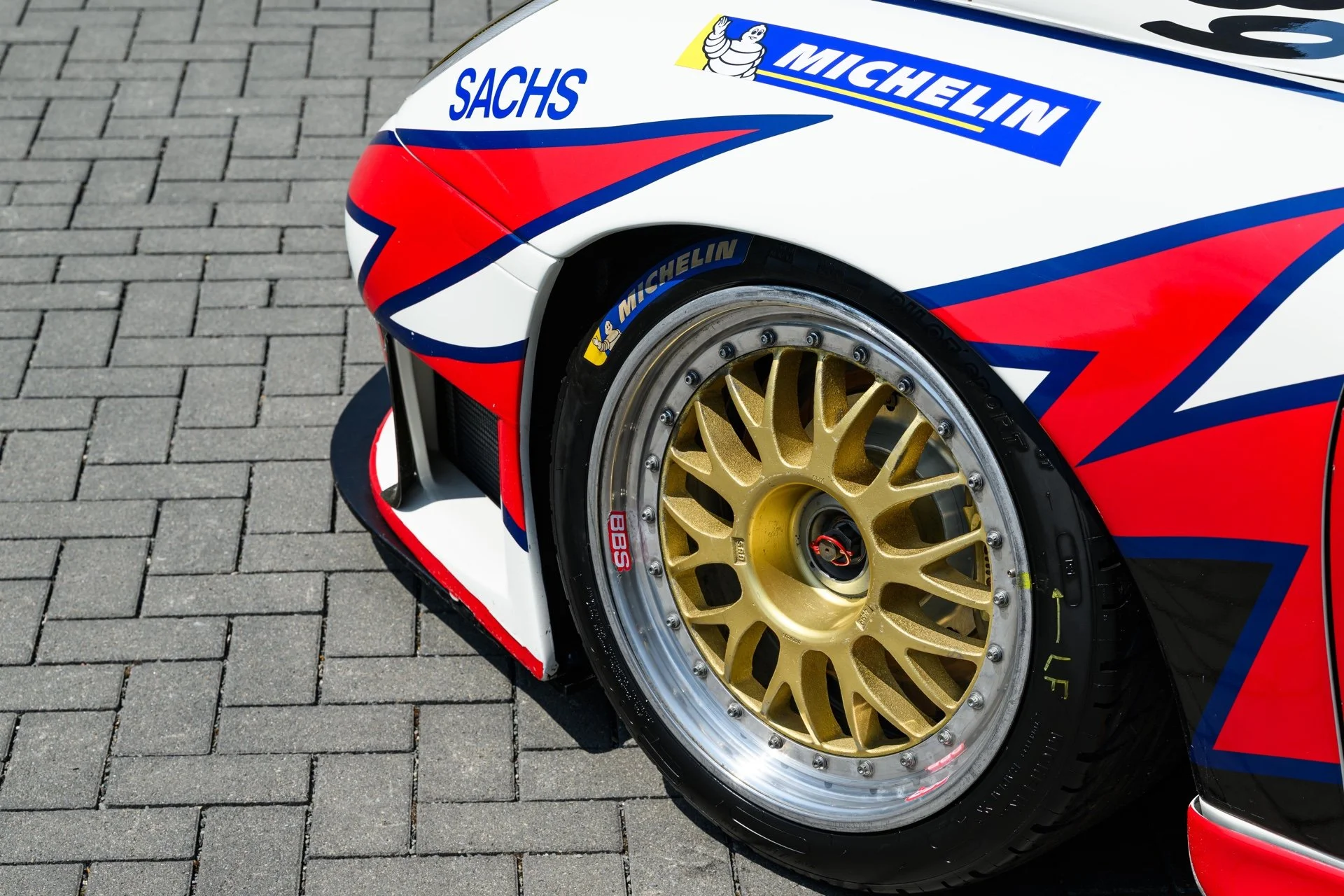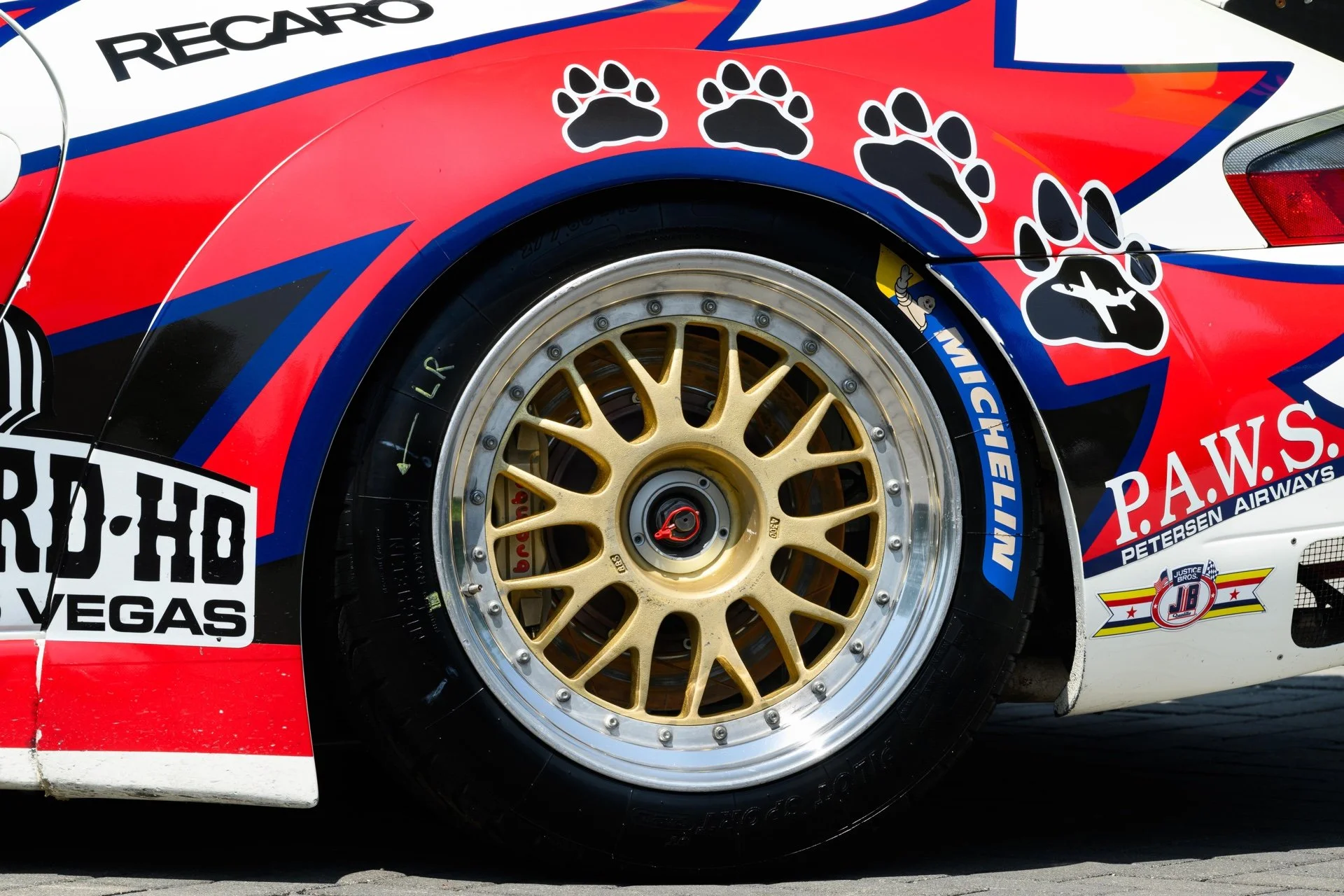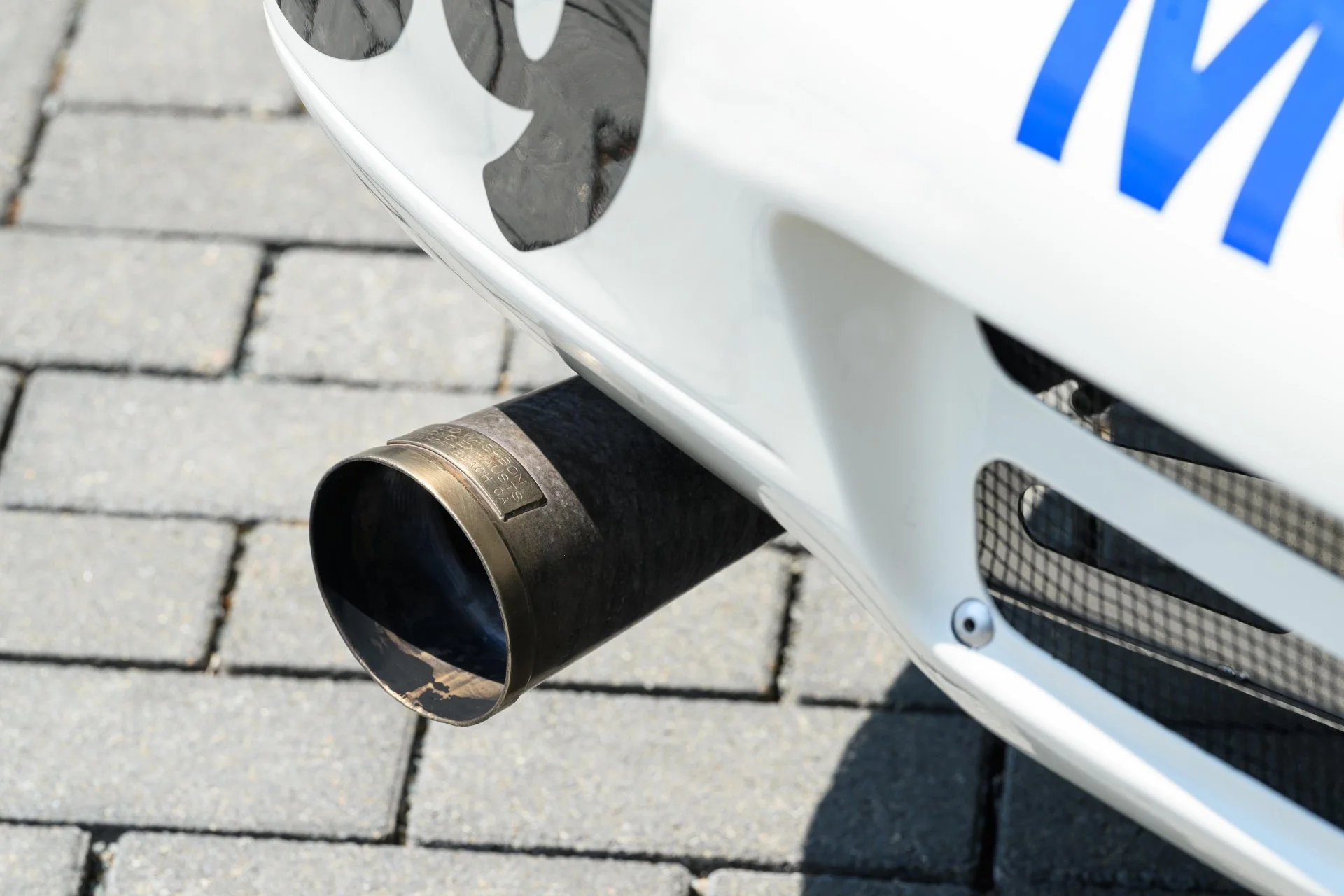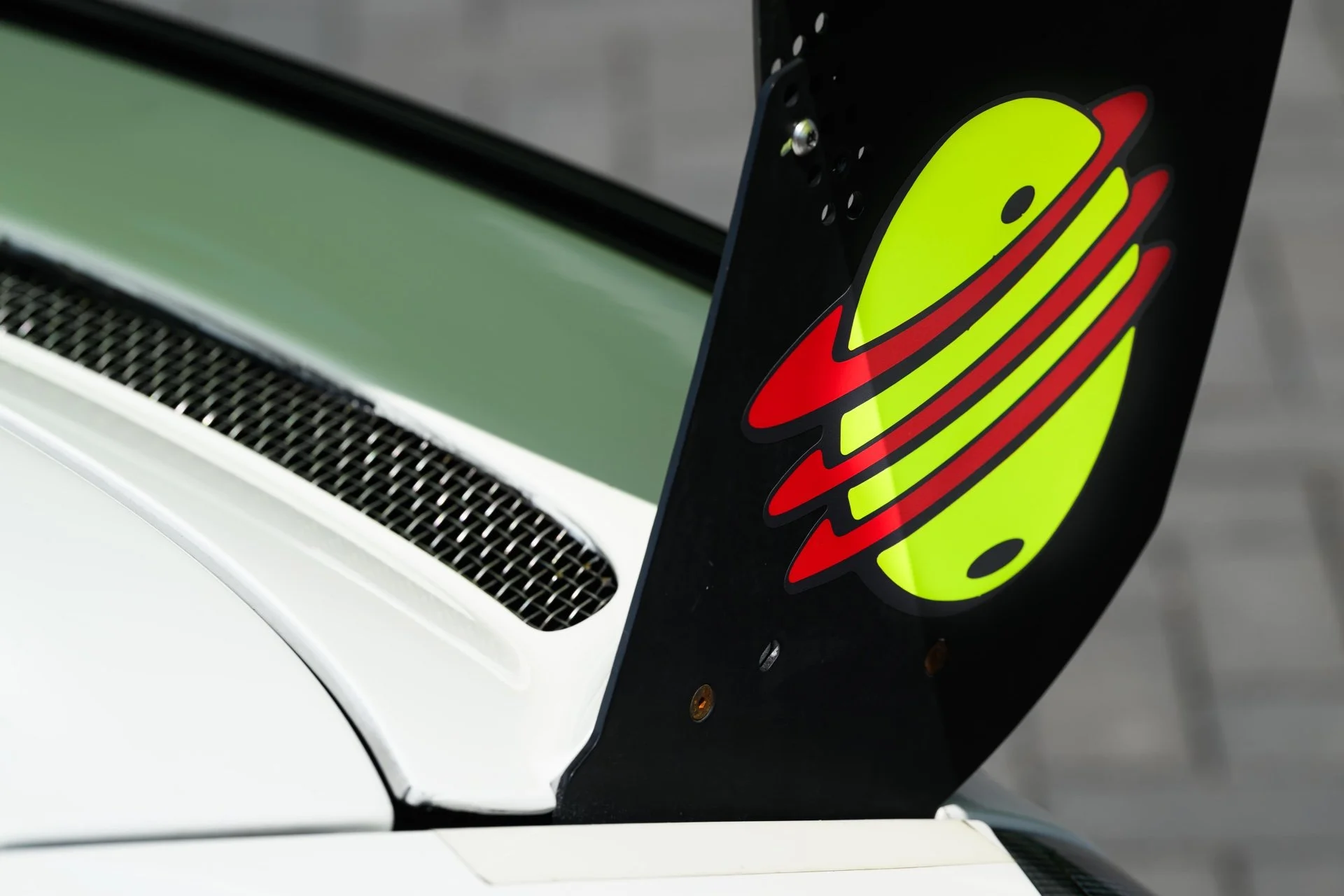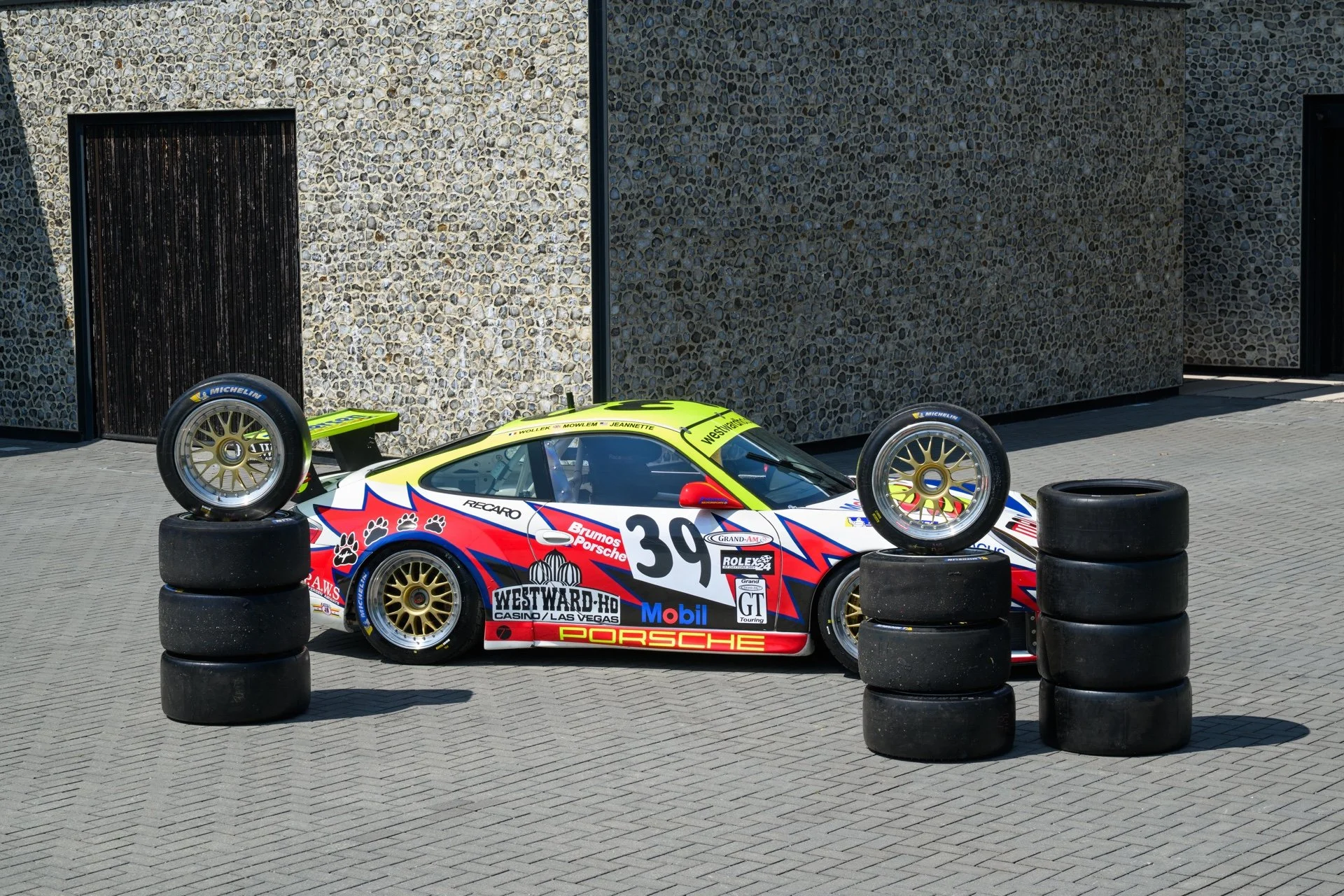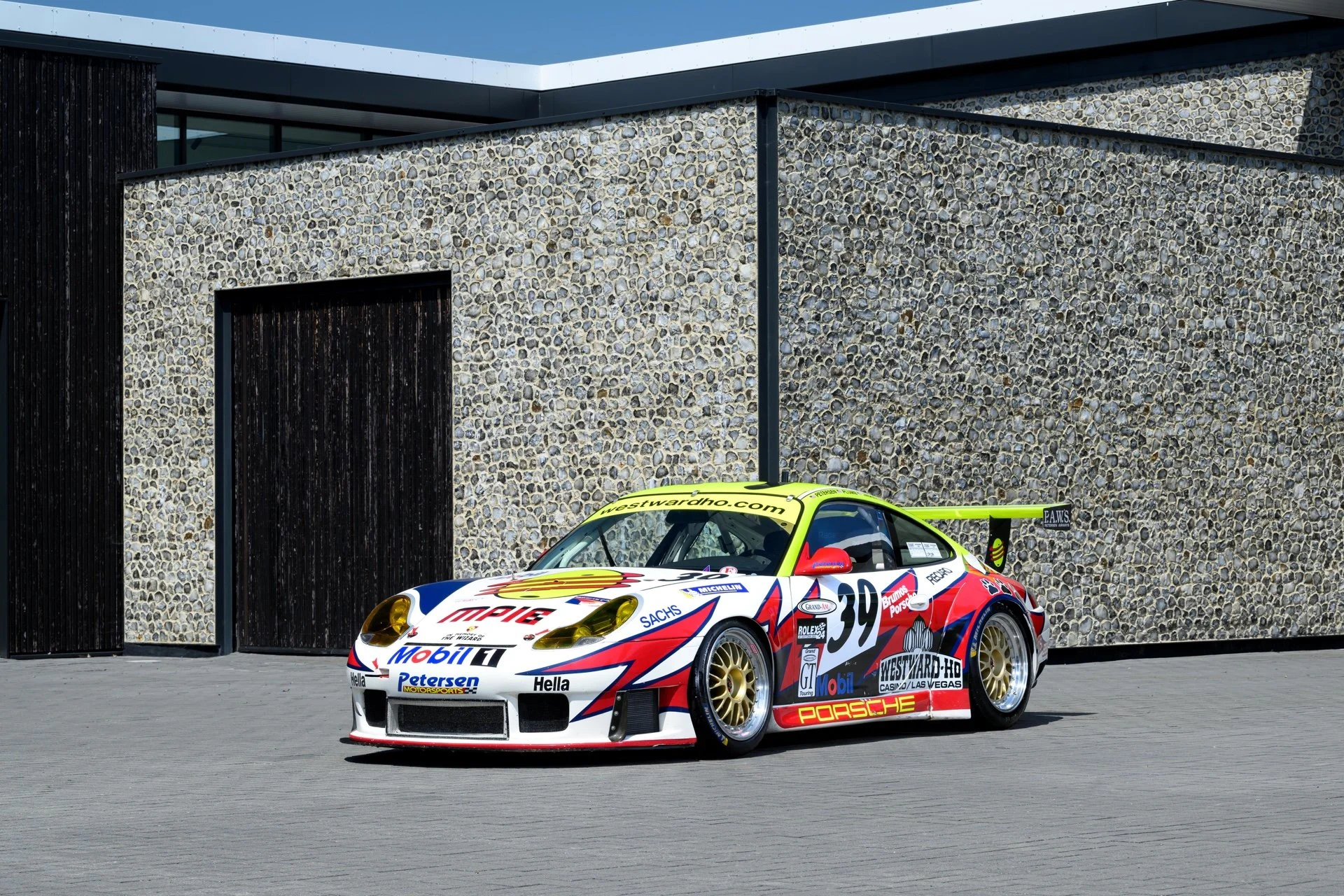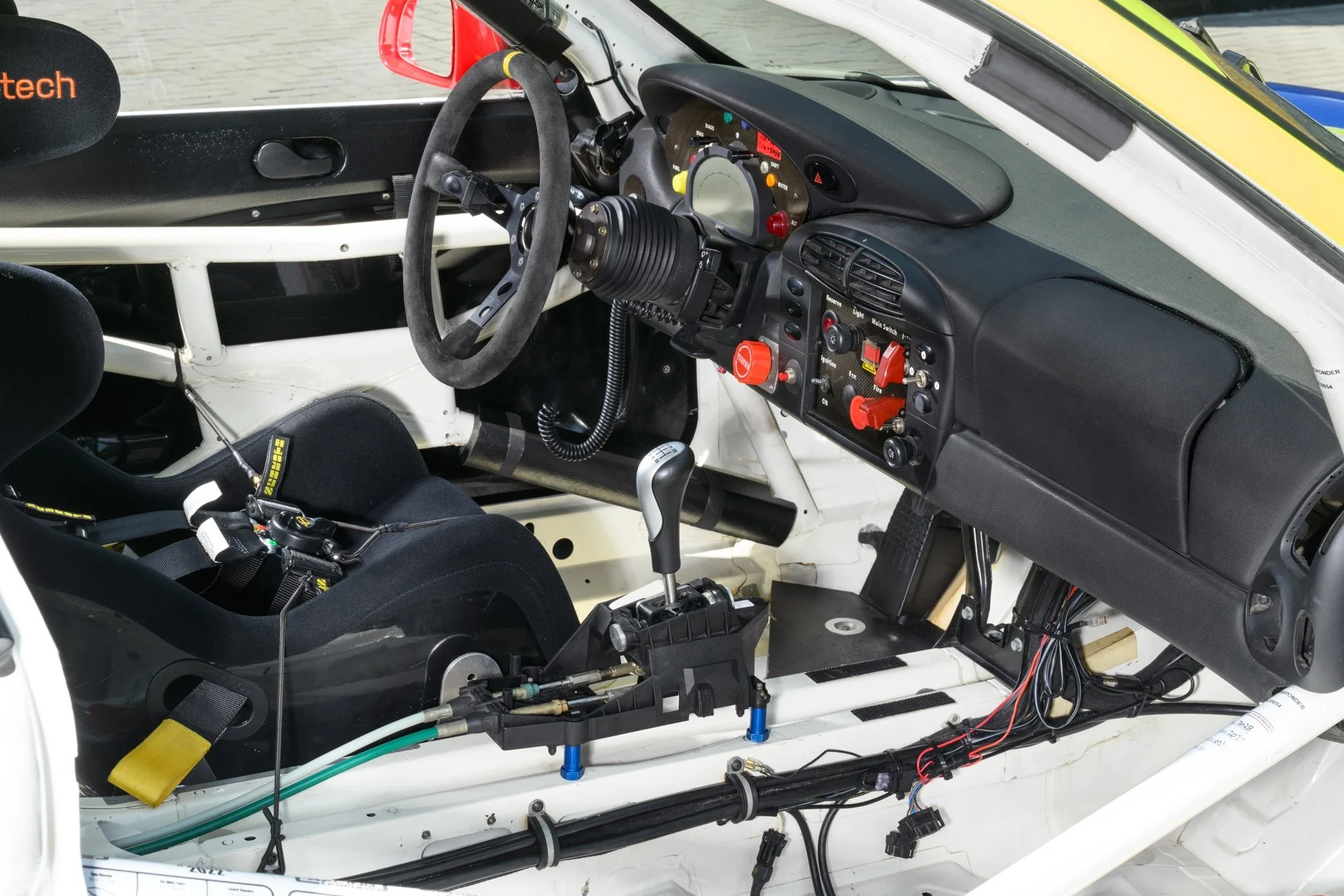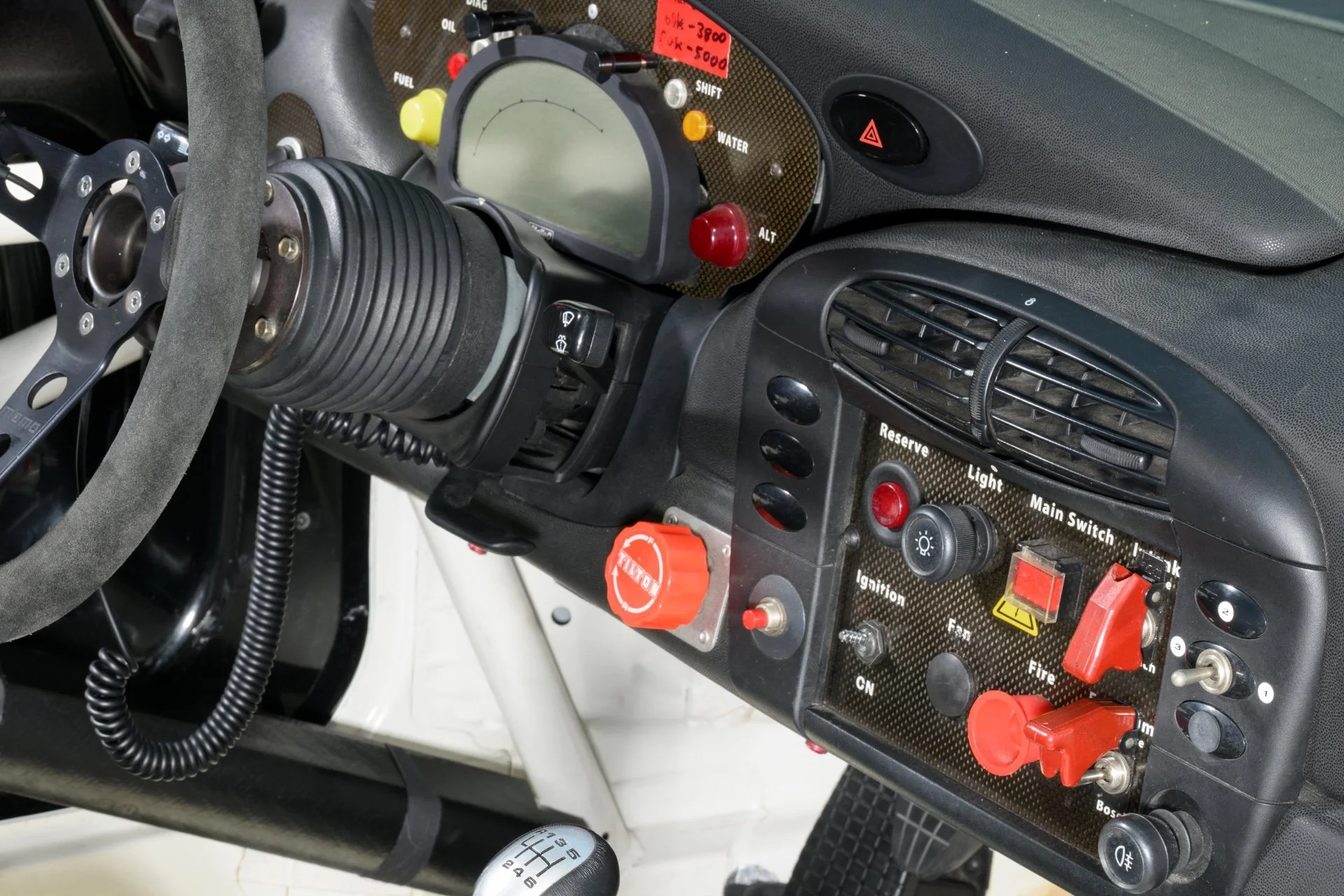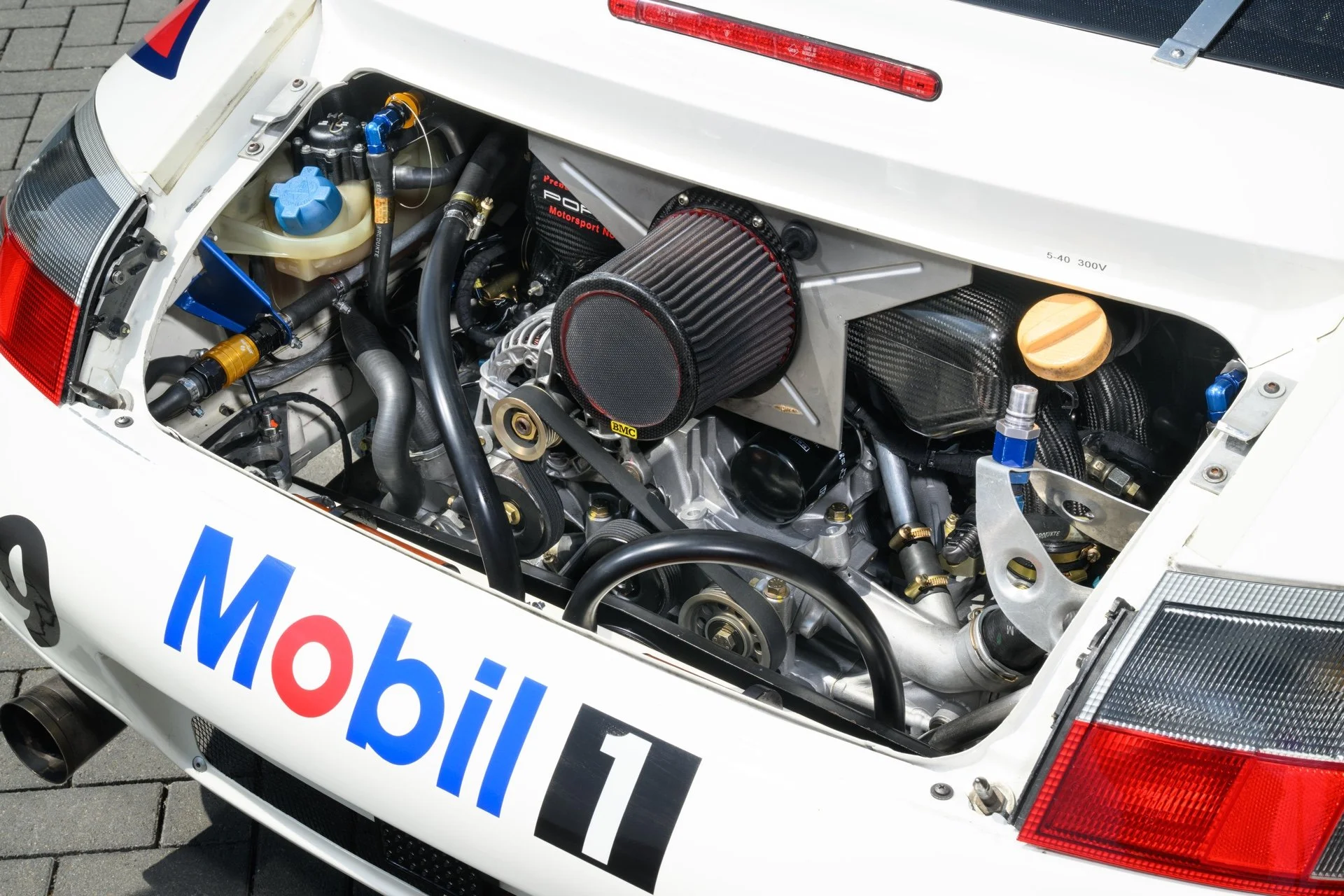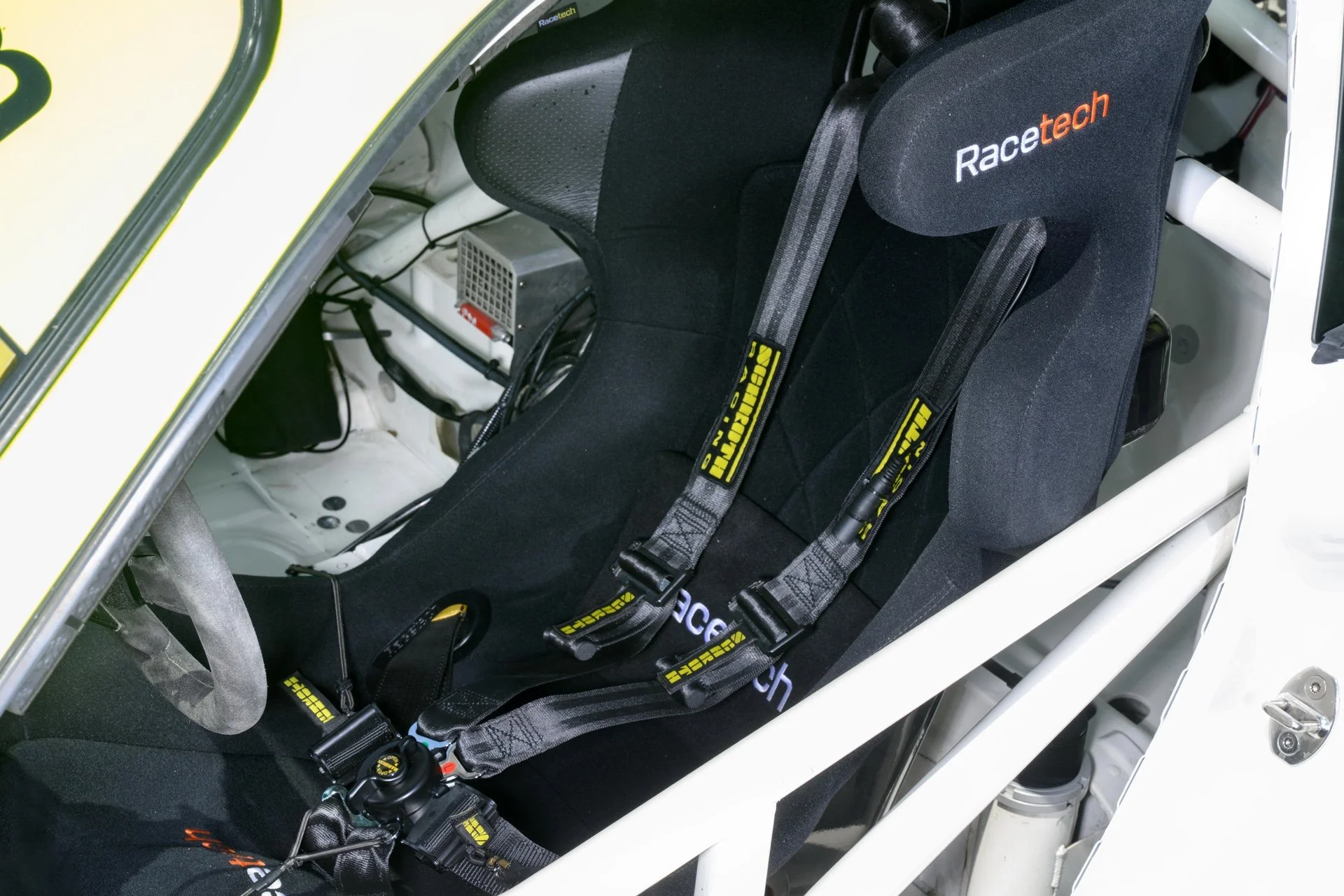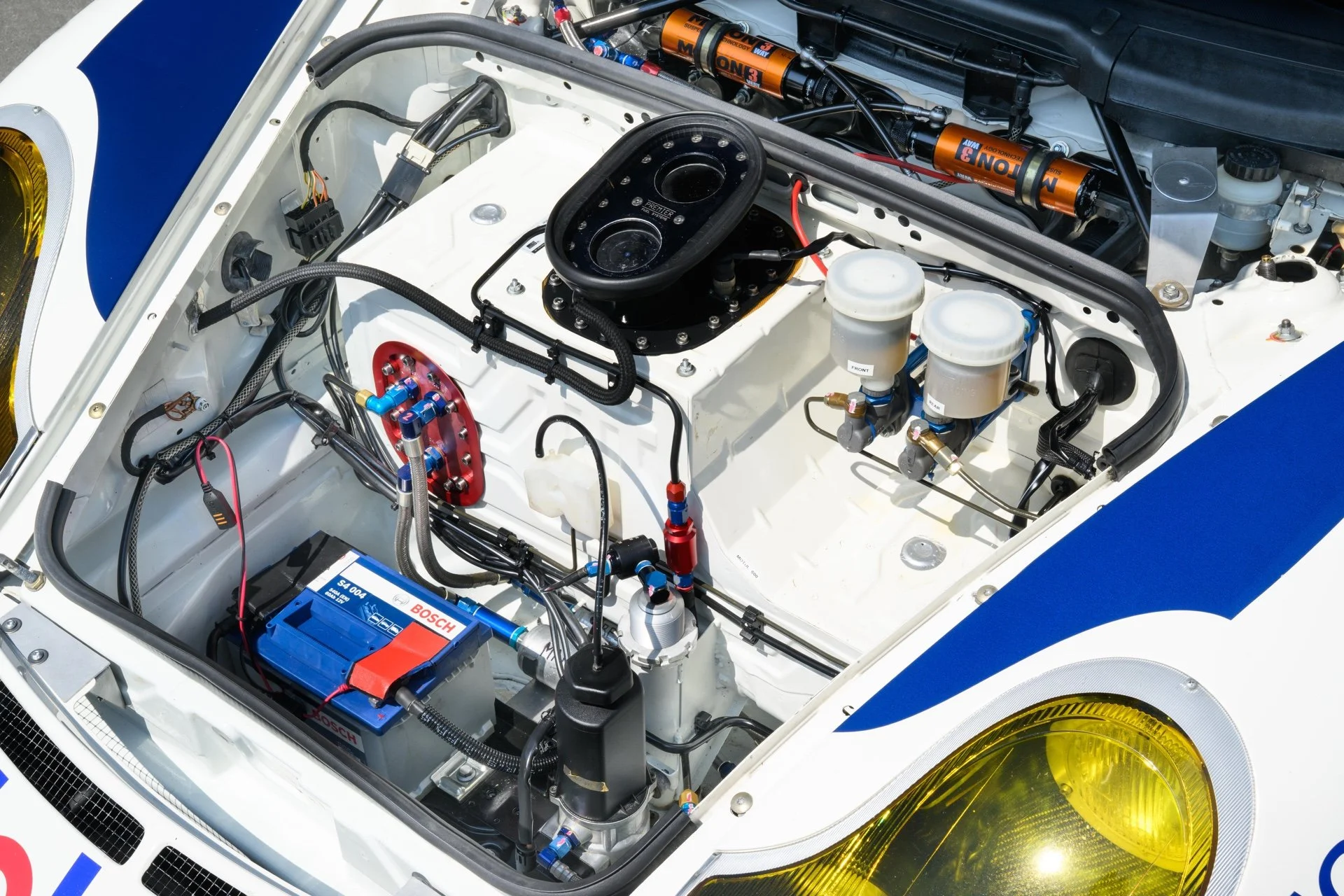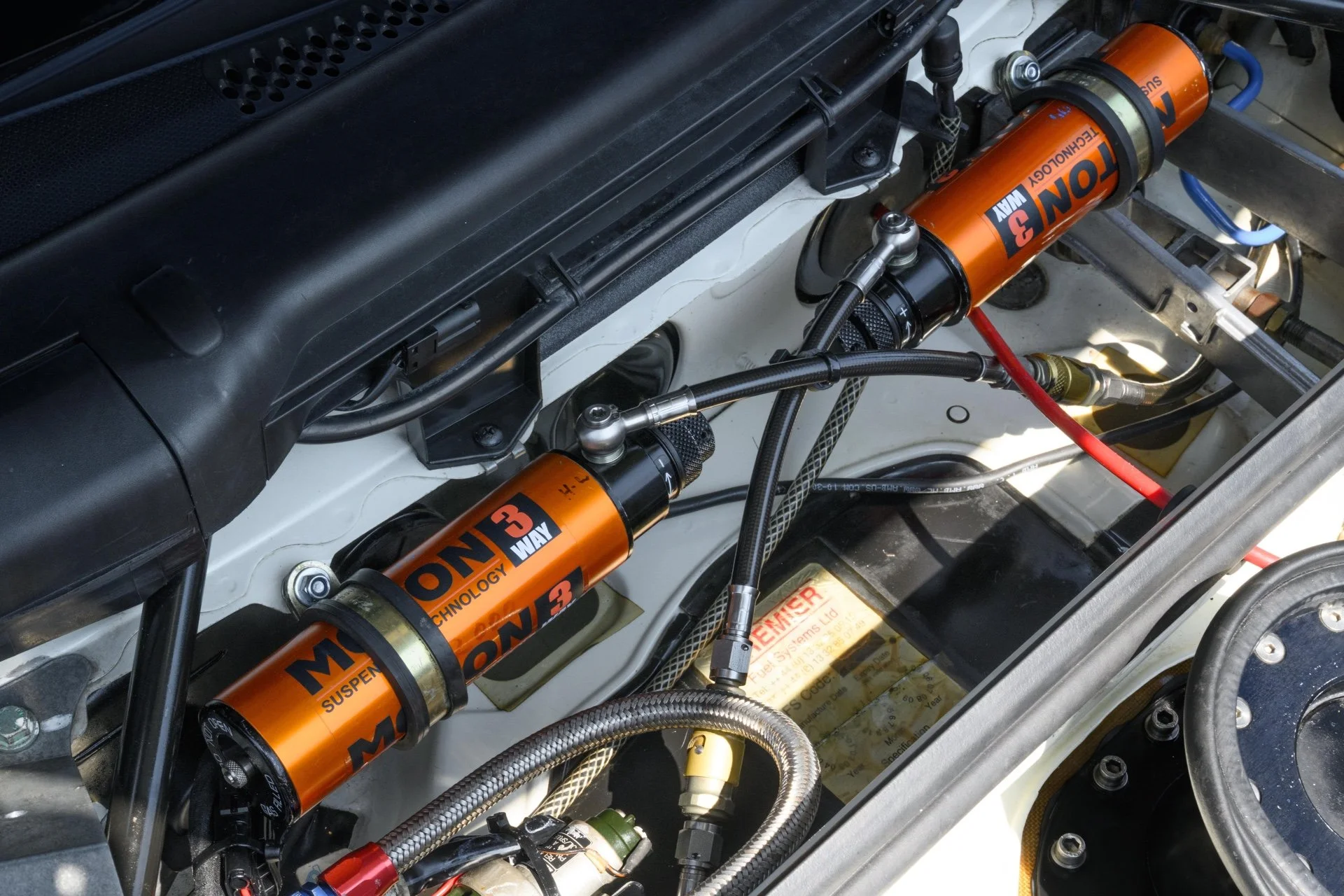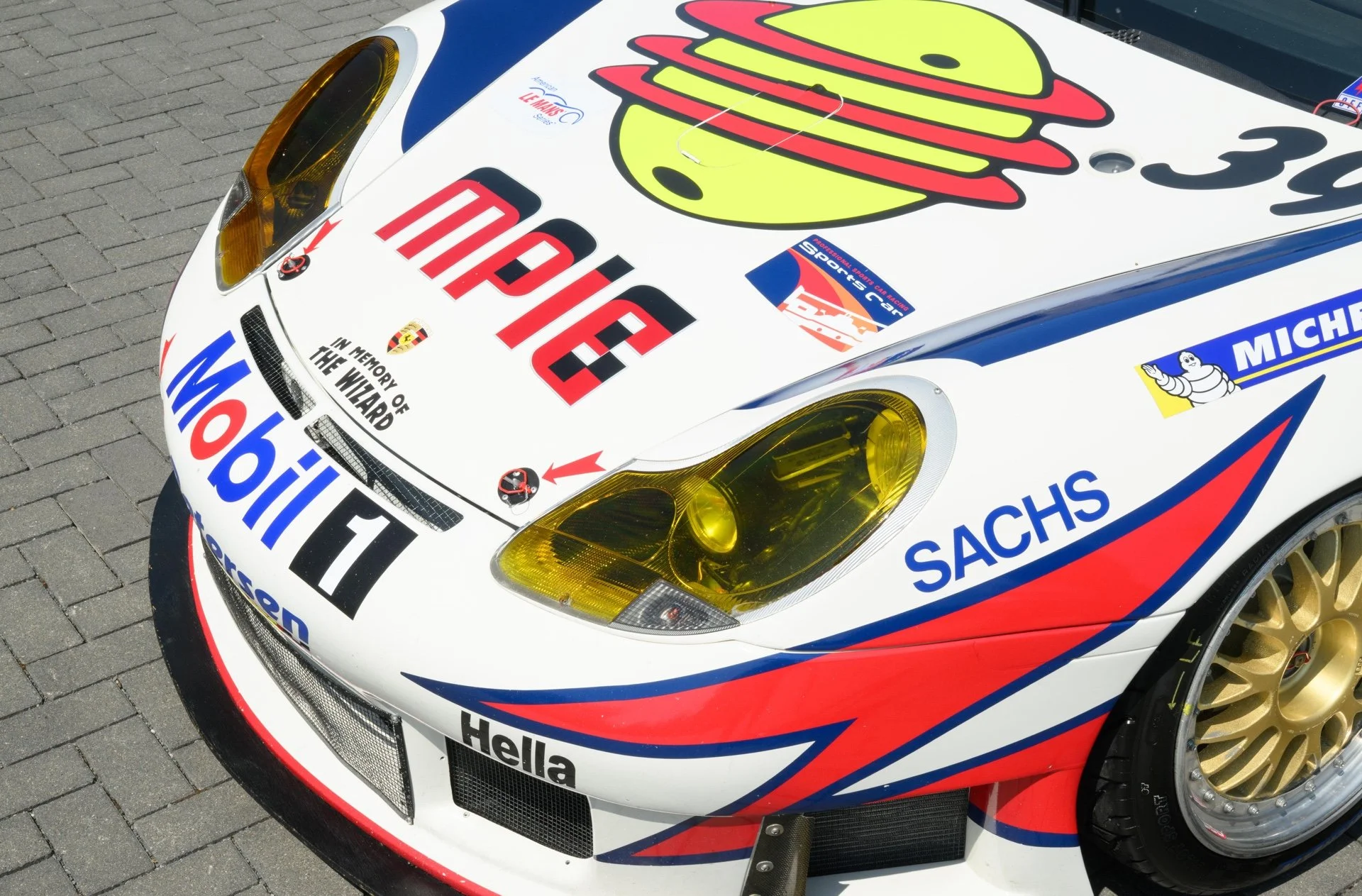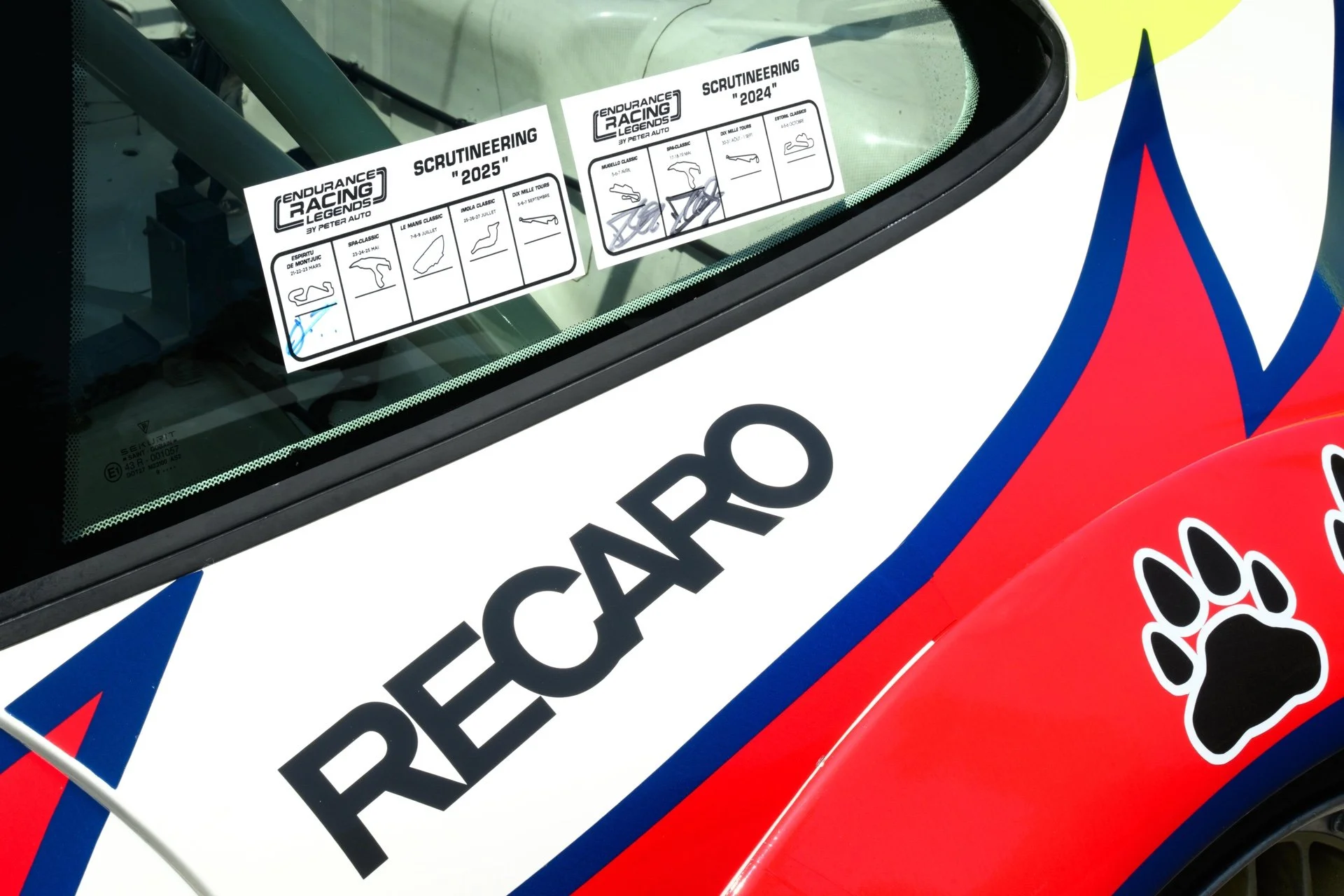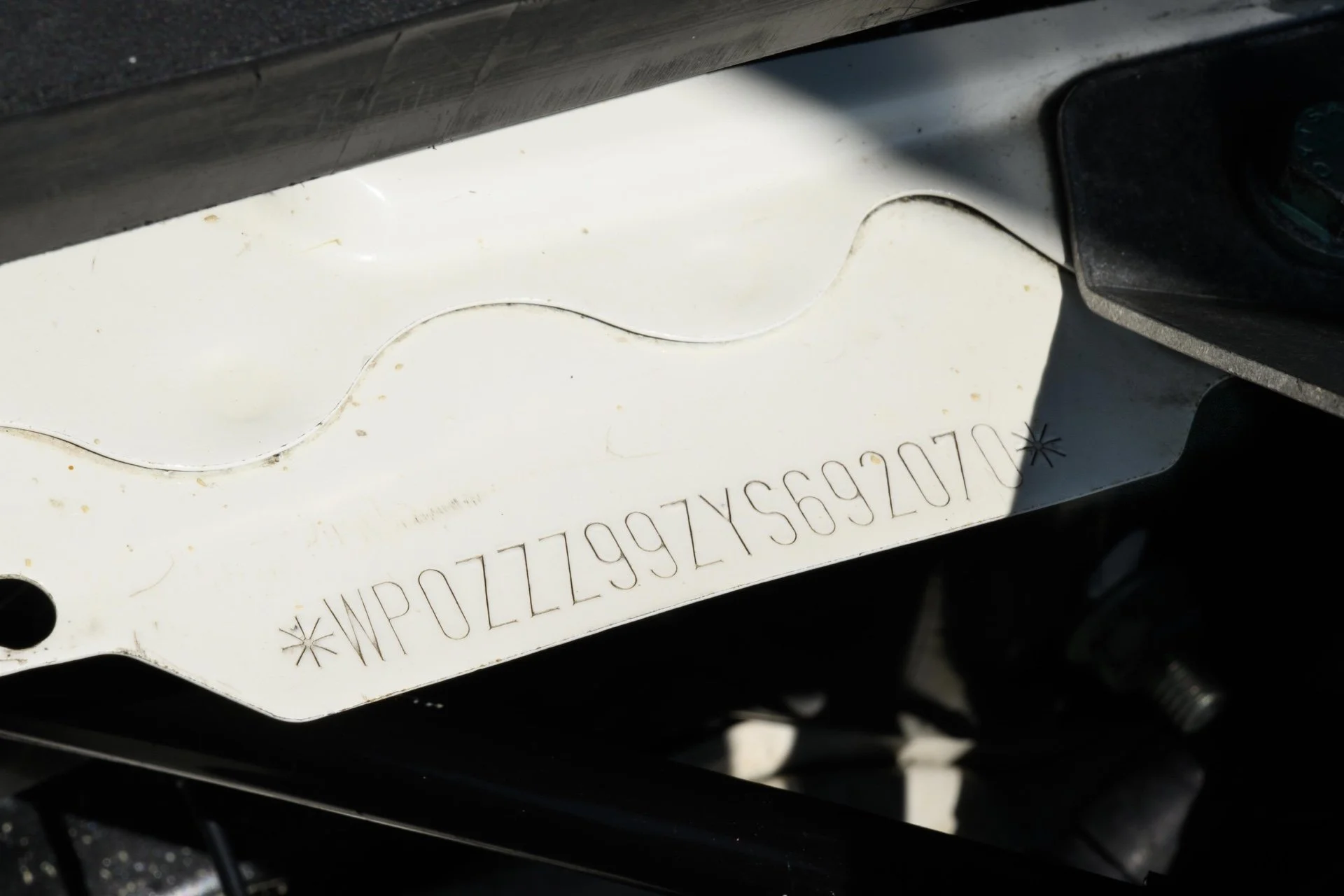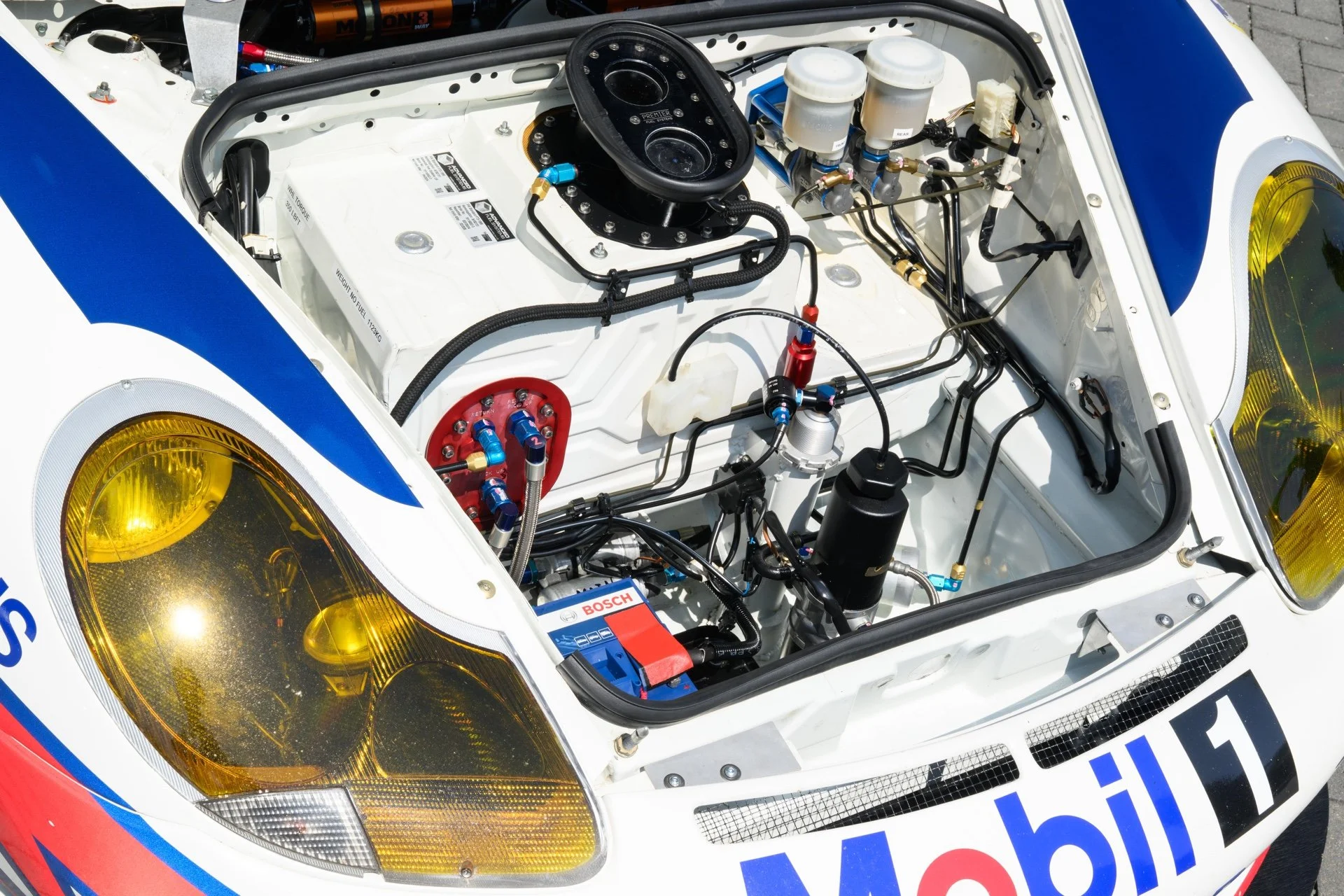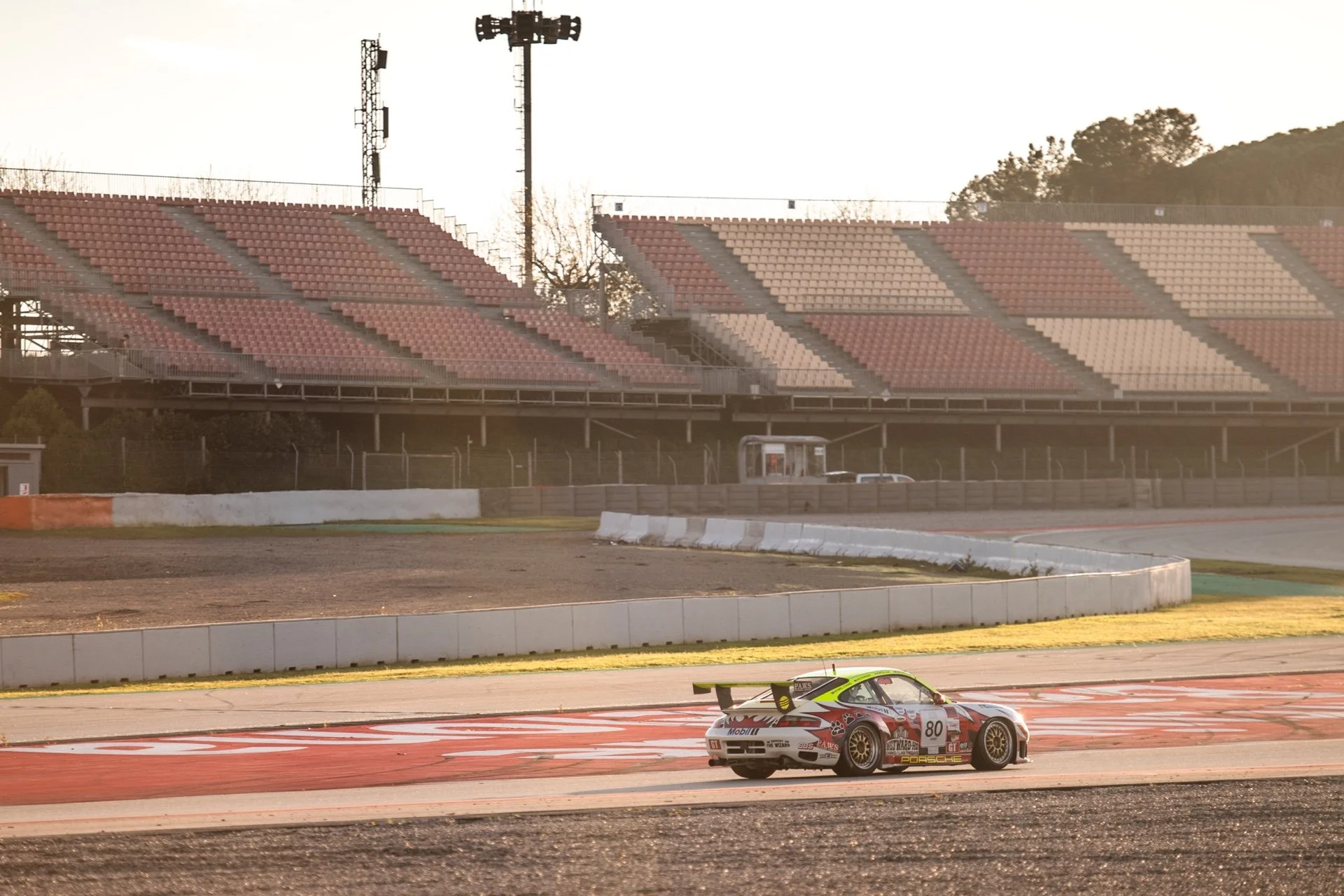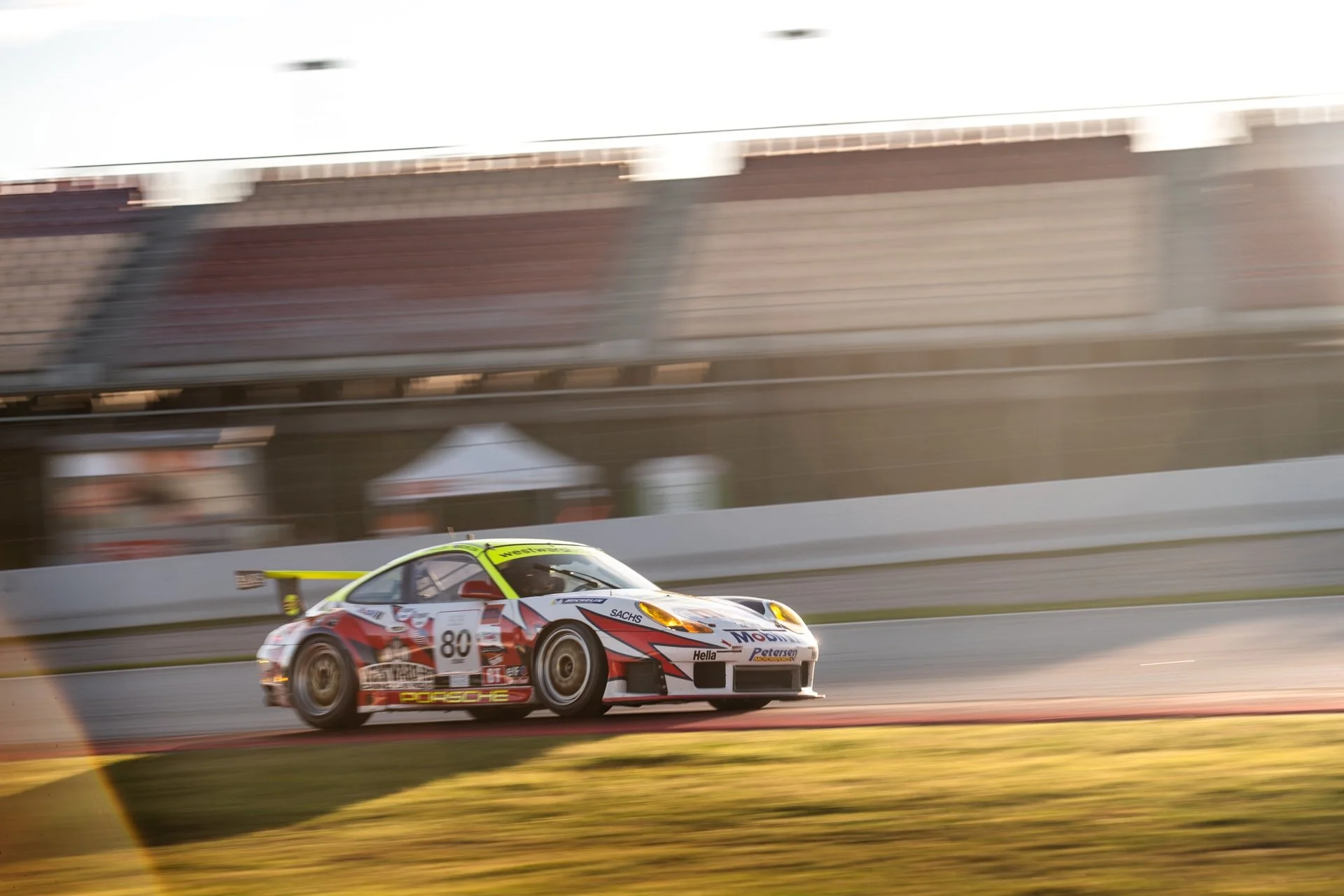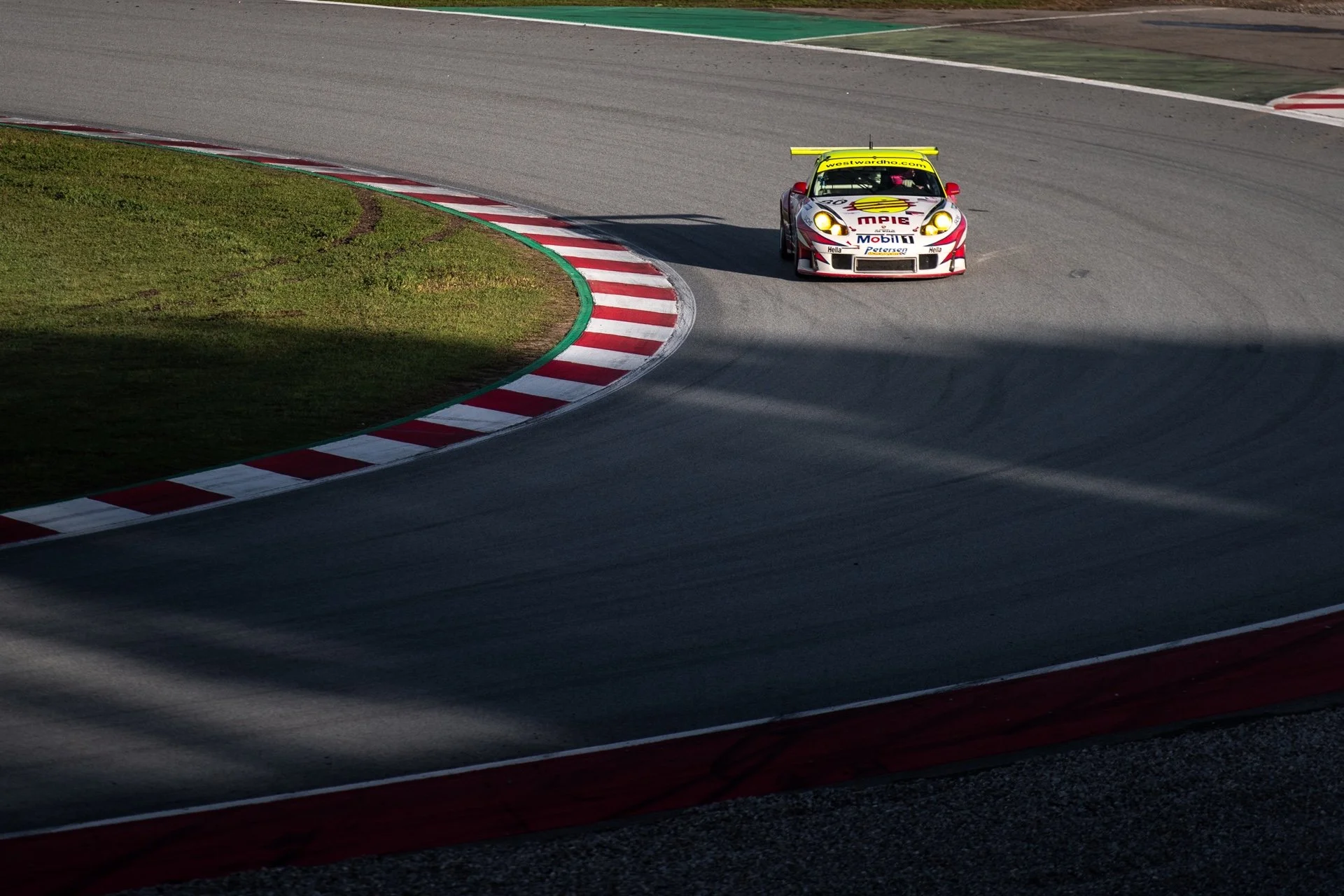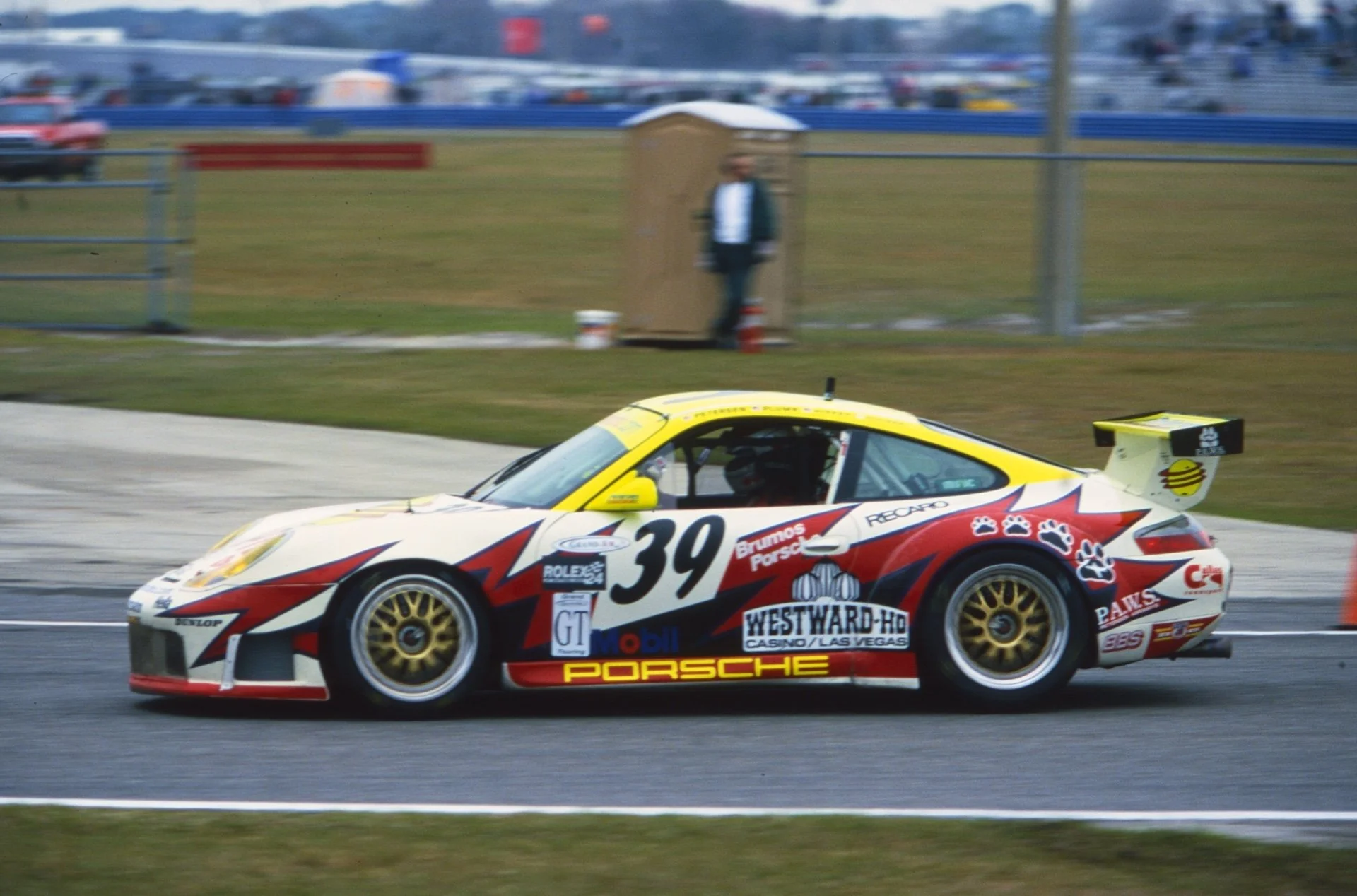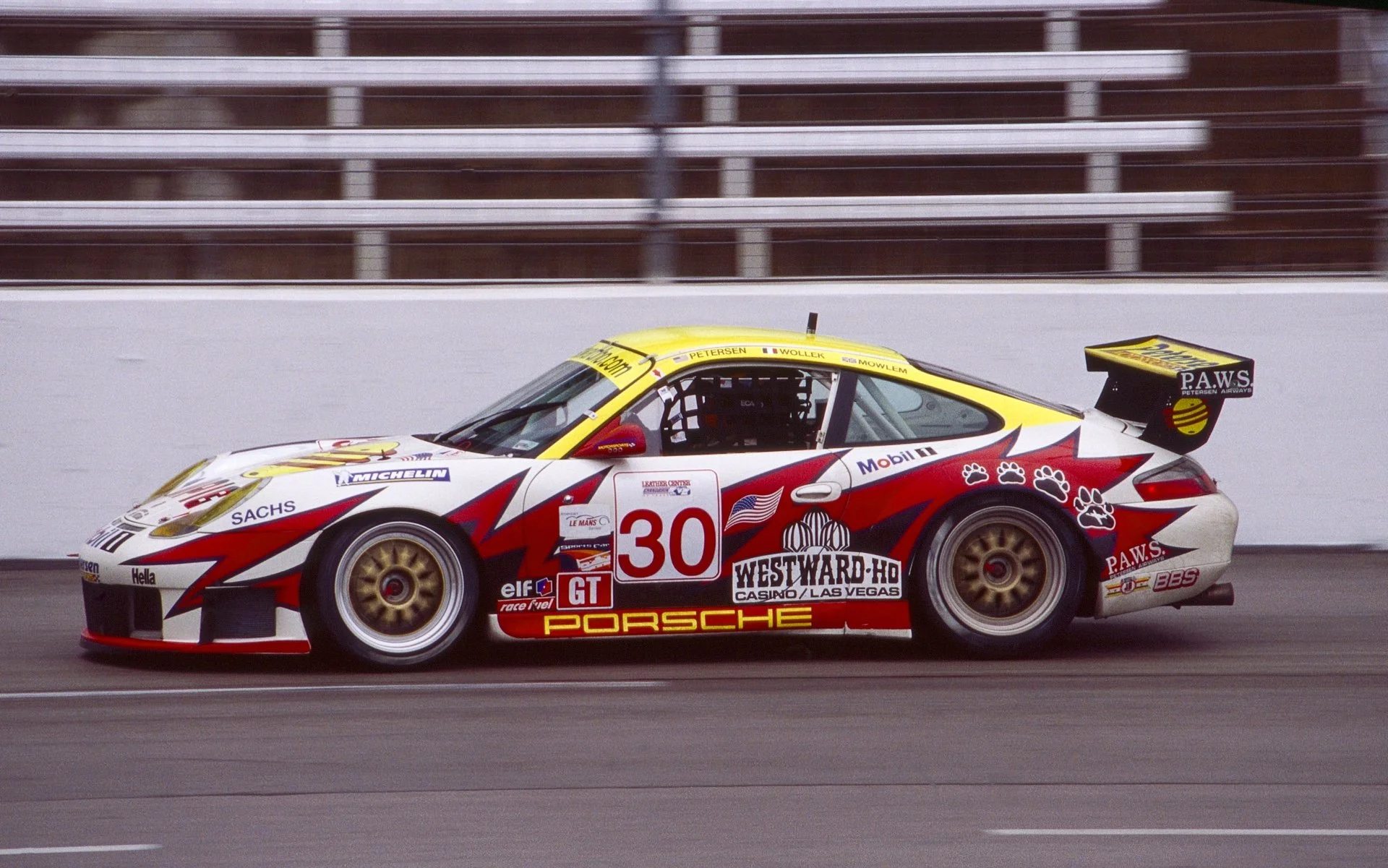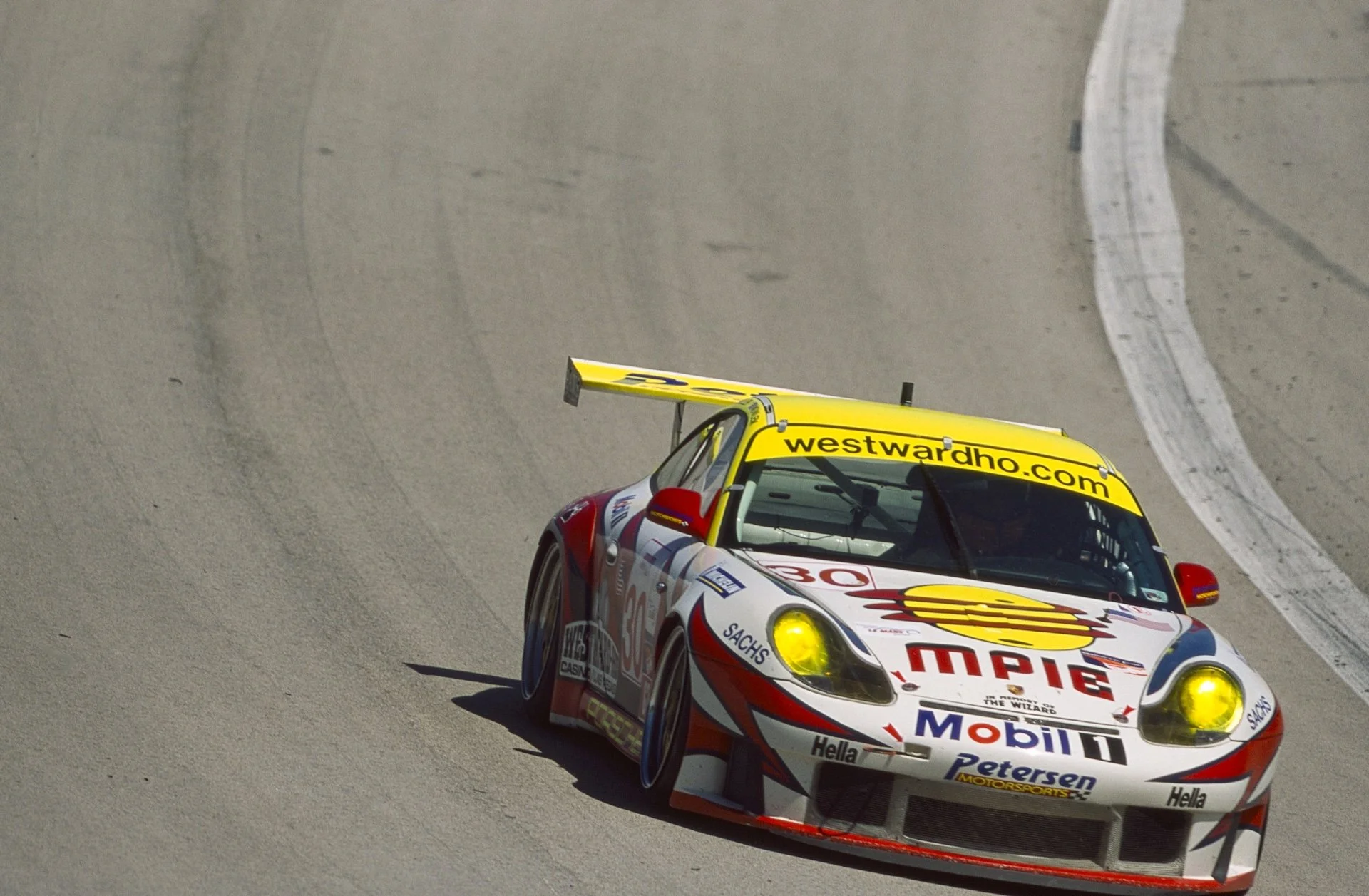2000 Porsche 911 GT3 R (996) - GT2
£ 295,000
With its famous livery, significant history and class-winning performance in Peter Auto’s popular ERL2 category, this fully-restored racer presents tremendous value as a turnkey entry into Europe’s premier historic endurance series.
OverviewEarly Porsche 911 GT3 R, sold new to the Petersen Motorsport / White Lightning Racing Team
A two-time 24 Hours of Daytona competitor and 12 Hours of Sebring entrant, as well as a regular in the American Le Mans Series
Raced by many drivers of note, including four-time Daytona 24 Hour winner Bob Wollek, in addition to Johnny Mowlem and Randy Pobst
Successfully raced in SCCA South East events by Lee Stack
Never involved in a major accident and retains its original Porsche factory shell
Restored to full running order by specialist Lee Maxted-Page in 2021
Offered in truly race-ready condition having been campaigned in the opening rounds of the 2025 season
Perfect for Peter Auto’s Endurance Racing Legends series in which it has proven its competitiveness in the GT2B category with regular podiums and a class win.
Also eligible for the newly announced Le Mans Classic Legend event, Masters Endurance Legends and in the US: HSR, Daytona and Sebring retrospectives
Accompanied by the original sales agreement, detailed competition records and further paperwork
Offered with 22 hours left on the engine and a useful spares package
-
Porsche went to great lengths to win the 24 Hours of Le Mans outright in 1998 to celebrate the company's 50th anniversary in style. Light on resources thereafter, the Porsche Motorsport department in Weissach returned to its core operation of building competition cars for customers. The first example of this new generation of racers was the 911 (996) GT3 R, which marked its debut in 1999 with a class win at Le Mans. This would be the first of many successes around the world for years to come for Porsche and the company's customers in the junior GT category.
The GT3 R was based on the all-new Type 996, the fifth generation of the iconic 911. A fundamentally different car than the first four iterations, featuring a water-cooled flat-six as opposed to an air-cooled engine which had its limitations. As well as issues with emissions and noise regulations, Porsche had found it impossible to create a twin overhead camshaft, four-valve per cylinder version of the engine that could be properly cooled by airflow alone.
For motorsport purposes, Porsche first used a hybrid engine featuring water-cooled heads before switching to a full water-cooled engine, the latest version of which had powered Porsche to its 16th outright win at Le Mans in 1998. The regular production 996-generation 911 received a water-cooled, four-valve engine. It also differed from the previous flat-six engines in that it used a wet sump instead of superior but more complicated and expensive dry-sump lubrication. As such, the 'M96' did not form the ideal basis for a competition engine.
This prompted Porsche Motorsport to produce an iconic homologation special: the Porsche 911 GT3 road car. Powered by a water-cooled, naturally aspirated version of the 911 Turbo engine, the first sign of things to come was the one-make 911 Supercup, which used the same engine and styling cues but was not bound to homologation requirements. In March 1999, the 911 GT3 road car was introduced at the Geneva Motor Show. Originally, the plan had been to produce just 1350 cars to give the factory something to do between the end of the 993 Turbo production run and the introduction of the new 996 Turbo. It proved a huge success and the 911 GT3 road car remains in production today.
Using the GT3 road car as a starting point, chief Porsche Motorsport development engineer Roland Kussmaul created the 911 GT3 R competition car. All non-essentials were removed, and some of the steel panels, such as the doors, were replaced by carbon-fibre facsimiles. As a result, weight was reduced by some 200 pounds compared to the GT3 road car. An aerodynamically shaped carbon-fibre composite front bumper was fitted, as was a full-width rear wing. Fitted with the mandatory restrictor, the 911 GT3 R engine produced around 420bhp, and equipped with megaphone exhausts, it reportedly was the loudest Porsche engine ever produced. Crucially, it could also be used for 30 hours before needing any serious work.
When development started, the new 911 competition car was destined to run in the newly created GT3 category and was named accordingly. However, a shift in regulations meant that the 911 GT3 R never actually raced in the class it was named after. Over the next seasons, it raced instead in similar classes that were all named differently, including GT, GTU, LMGT and N-GT. The various governing bodies eventually settled on GT2, which is still used today in historic racing to classify these cars.
The 911 GT3 R made its debut at the 24 Hours of Le Mans, where two cars were entered with works backing by Dave Maraj of Champion Racing fame and Manthey Racing GmbH. The Manthey Racing example was driven by Luca Riccitelli, Uwe Alzen and Patrick Huisman and finished 13th overall and first in class. It was the start of a hugely successful career that saw the 911 GT3 R dominate in championships all around the world. Demand was such that Porsche Motorsport built 15 examples per month. A success on the track and in the showroom, the GT3 R was superseded by the mildly modified 911 GT3 RS from the 2001 season onwards.
With the original 911 GT3 R, Porsche set the new benchmark for the 'GT2' category in which the German manufacturer would remain a frontrunner for years to come.
-
One of the first 911 GT3 Rs produced, chassis ZYS692070 was commissioned by Michael Petersen to be run by their Petersen Motorsport / White Lightning team in the American Le Mans Series. While Petersen's motorsport experience mainly consisted of off-road events, he started sharing circuit racers with team manager Dale White in late-1997. The new 911 GT3 R was ordered to replace the 993-generation 911 RSR 3.8 during the 1998 and 1999 seasons. It was painted in the iconic white, yellow and red lightning livery designed by David Schnorr that the team would use for seasons to come.
Partnering with Kevin Buckler of the Racer's Group, the 911 GT3 R was first raced in the Daytona 24 Hours at the start of the 2000 season. White and Petersen also drove, as did Wade Gaughran and Philip Collin. The five American drivers eventually finished 15th overall, and a highly commendable 4th in class in GTU. It was then readied for the American Le Mans Series where it was raced throughout the year carrying the number 30 with variations on the striking livery and a constantly changing driver line-up
Rod MacLeod, Gunnar Jeannette and Michael Lauer were chosen to drive for the season opener at the Sebring 12 Hours. Starting 36th, they were classified 29th after a cooling system failure brought an early end to their race. For the subsequent Charlotte round Jeannette was joined by Quentin Wahl, where they would finish 6th in the GT class. Jeannette and White would repeat this result at Sears Point in September. A brand new driver line-up of Robert Nagel and Wade Gaughran raced at Portland with an 8th in class.
For the blue riband Petit Le Mans, Jeannette lined up together with Joe Policastro and Wayne Jackson. They finished 25th overall and 10th in class. The best ALMS result of the year came at Laguna Seca, where Cort Wagner partnered with Mike Fitzgerald, finishing 18th overall and 4th in class. A fortnight later, the successful driver duo reprised but only managed a 9th in class at Las Vegas. The final outing of 2000 came on the very last day of the year. Fitzgerald competed in the 'Race of a Thousand Years' in Adelaide, Australia, with Randy Pobst to score a 7th in class. The team ended the year sixth in the ALMS GT standings, showing great consistency and reliability throughout the year.
Back on American soil, ZYS692070 was entered in the Daytona 24 Hours once more. While Michael Petersen was listed, he never drove in the race. Hugh Plumb, Kimberly Hiskey and Micheal Culver did, finishing an impressive 10th overall and 7th in the GT category. The final outing under the original ownership came at the Leather Center Grand Prix of Texas, which was the ALMS season opener that year. Behind the wheel on the new infield course of the Texas Motor Speedway were British driver Johnny Mowlem and Porsche legend Bob Wollek. They finished an impressive fourth in class behind two of the new GT3 RS 911s and a works-backed BMW M3.
The Texas race would prove to be Wollek’s last. Tragically, he was killed in a cycling accident ahead of the Sebring 12 Hours where he was due to race the car again. In the circumstances, Petersen Motorsport withdrew its entry from the race.
The Porsche was sold to Lee Stack in 2003. With support from Orbit Racing, he raced the car in four SCCA events with great success. At Savanna, he qualified first in class and claimed the class win in the race, finishing second overall in the process. At Moroso, he started on pole for both heats and won both. Stack was back out at Moroso for the following round and qualified on pole again. He won two heats outright and placed second in the third. The final outing for Stack with the car came at Daytona, where he clinched the class pole but had to settle for second and third in class during the two heats.
From Stack, it was sold to Richard Molke. He used the 911 GT3 R for a mere two hours before it was sold to another customer of Orbit Racing. The car was initially kept at the Orbit Racing facility and regularly run on the chassis dyno to ensure it remained in running order. Some years later, it was moved and joined the rest of the owner's collection. In 2018, it was sold with the help of Orbit Racing to British Porsche specialist Lee Maxted-Page. It was confirmed that the engine in the car was the same as fitted after Daytona in 2000 and was used throughout the remainder of its period racing career.
Maxted-Page set about restoring the car to full running order for use in historic racing. The engine and gearbox were rebuilt and David Schnorr, the original livery designer, was employed to put the car back in the striking lightning livery the car ran during its final outing at the 2001 Leather Center Grand Prix of Texas.
Following the comprehensive restoration, it was first raced by Lee Maxted-Page himself at the 24 Hours of Le Mans in 2021, in the Endurance Racing Legends support race. Eligible for the GT2B category of Endurance Racing Legends, it has since proven a regular class podium finisher, highlighted by a class win at the 2022 Dix Mille Tours. In June 2023, it was sold to the vendor who has continued to race the 911 GT3 R in Endurance Racing Legends events, including at the 2023 Le Mans Classic. In April of 2024, the engine was rebuilt and currently still has 22 hours left before its next major service is required. It is also accompanied by a running spares package. Most recently, the car’s livery has been altered, incorporating elements seen on the car during the 2001 24 Hours of Daytona.
Highly competitive in period, the ex-Petersen Motorsport / White Lightning Racing Porsche 911 GT3 R is eligible for the new GT2-only Peter Auto Endurance Racing Legends 2 grid, and also for the Le Mans Classic, Masters Endurance Legends and the HSR Daytona and Sebring retrospective events. Raced by some of the day's greatest sports car drivers, the striking livery ensures that this 911 GT3 R will not go unnoticed wherever it will be raced or shown next.
-
Technical Passport:
Issuer: Endurance Racing Legends
Expiry Date: January 2033
Crack Testing:
Last Date Completed: March 2024
Engine Life:
Last rebuild: April 2024 by Lee Maxted-Page
Current Engine Mileage: 8 hours
Recommended Engine Rebuild Interval: 30 hours
Remaining Hours Available: 22 hours
Gearbox:
Maintained as required, no known faults
Fuel Cell Certification:
Expiry Date: February 2026
Seatbelt Certification:
Expiry Date: 2029
Seat Certification:
Expiry Date: 2029
Fire Extinguisher Certification:
Expiry Date: February 2026
-
Category
GT2/GTUChassis
Steel monocoqueEngine
Water-cooled, 3598cc, 24-valve, Porsche M96.77 flat-six engine, producing approximately circa 411 BHP at 8,200rpm with a restrictor size of 43.1mmGearbox
Porsche G96/91, 6-speed, H-Pattern manualFront suspension
McPhearson strut with wishbones, adjustable coil springs over dampers, adjustable anti-roll barRear suspension
Independent multi-link wishbones, adjustable coil springs over dampers, adjustable anti-roll barElectronics
Bosch ECU, Motec dashboard, Porsche wiring loomBrakes
Ventilated Brembo steel discsWeight
TBCTyres
Michelin racing slicks/wets -
Peter Auto’s Endurance Racing Legends – Including Le Mans Classic support race
For pre-2005 prototypes and pre-2010 GTs, which competed in international sportscar racing. The hugely popular series visits iconic circuits including Spa, Imola and Paul Ricard.
Le Mans Classic Legend
Newly announced, this is a brand new biennial event starting in 2026 that celebrates the more recent eras of Le Mans history, featuring prototypes and GTs from 1976 – 2015 that wrote the contemporary history of the world’s greatest endurance race.
Masters Endurance Legends
For Le Mans Prototypes and GT cars, which competed in the major endurance championships between 1995 and 2016, Masters Endurance Legends holds a full annual calendar of events both in the UK and in Europe. These events take place at some iconic circuits, including Silverstone, Spa and Paul Ricard.
HSR Group 9 - Including Daytona and Sebring Classics
For modern era GT1/GT2/GT3 & TransAM cars, HSR’s Group 9 holds a number of events in the United States. Among these events are two of the premier events for historic endurance competition, which are the HSR Classic Daytona in November and the HSR Classic Sebring 12 Hour in December.
-
Complete sets of wheels with slick tyres x 2
Set of slick tyres x 1
Gear change cable x 1
Throttle cable x 1
Brake cylinders x 2
Suspension camber links x 2
Suspension toe links x 2
Front track rod link x 1
Rear track rod link x 1
Hub – 22mm hub wheel nut x 2
Driveshaft gaitors x 2
Oil dipstick x 1
Gear oil filter x 1
Engine oil filter x 1
Fuel filter x 1
Hub bearings x 2
Spark plugs x 12
Power steering fluid bottles x 2
Driveshaft bolts x 6
Gearbox oil cooler pipe x 1
M10 suspension nuts x 4
Brake pad set x 2
Complete clutch assembly x 1
Pulley belt x 1
High pressure fuel pump x 1
Ignition coil packs x 6
Hub retaining nut x 1
-
Car Location:
This car is located at our Petersfield showrooms in Hampshire, United Kingdon where viewings are welcome by appointment.Tax Status:
UK
Sam Says“ The perfect car for any enthusiast looking to take their first steps into one of historic racing’s most popular categories for younger machinery. You’ve got a gorgeous H-pattern, manual gearbox, an abundance of mechanical grip, and that fabulous flat-six that sings in response to your footwork. Huge fun, huge provenance, well-prepared and tremendous value. ”
GallEryEnquiriesFor further information, please don’t hesitate to contact us.
ImagesTim Scott, Joris Clerc

